“1. e4 e5 2. f4 exf4
King’s Gambit Accepted”
For the contest (shorter) version: link
Summary
· Animal suffering per animal product is significantly higher for eggs, chicken and fish meat while animal suffering per animal product is significantly lower for dairy. The overwhelming majority of farm animal suffering is due to egg, chicken and fish production and consumption.
· The majority of the animal product consumption occurs in Asia and Africa due to large populations and increasing income levels in these regions. Further population and economic growth will also significantly increase the consumption of animal products in these regions for decades.
· Dairy traditionally constitutes a smaller share of animal protein consumption in many Asian and African countries (%0-15), while it constitutes a much larger share in other regions (%25-40). Low consumption of dairy seems to be compensated by higher consumption of other animal products such as eggs, chicken and fish which create much more animal suffering.
· Increasing the share of dairy in animal protein consumption by developing and promoting dairy in Asia and Africa looks tractable, following the examples in developed countries and some Asian and African countries.
· Dairy has a high feed conversion ratio. This efficiency allows dairy to be price competitive against factory farmed eggs, chicken and fish, if required improvements are implemented.
· Dairy products such as milk, cheese and yogurt compete with other animal products such as eggs, chicken, fish and pork in the food market.
· Widely available, cost-competitive and high-quality dairy products in Asia and Africa can decrease, or at the very least limit, the consumption of other animal products such as eggs, chicken and fish.
· If one assumes that development and promotion of alternative protein products is a cost-effective way to alleviate animal suffering by substituting primarily animal dairy and beef with plant-based dairy and beef, then one can also conclude that development and promotion of dairy in Asia and Africa can be an even more cost-effective way to alleviate animal suffering by substituting eggs, chicken, fish with dairy.
Disclaimers
I am not a dairy producer and I do not have a conflict of interest. I also do not consume animal products (under normal circumstances), including dairy.
Although I believe the arguments explained below make sense, there are many moving parts that require further research, evidence and feedback. This is only a shallow investigation, and I am definitely not an expert on Asia and Africa, dairy farming and economics (I am a legal philosopher). For these reasons, I have a decent level of uncertainty about the correctness of the individual points and the final conclusion in this post.
Since I wanted to present this idea in its best light, and there was a 5000-word limit, I spent most of my time (and words) explaining the arguments, not the rebuttals. In terms of style, while most of the content is descriptive, it may still sound a bit one-sided. English is not my native language, so I had some difficulty finding the right balance. So please keep in mind that I am also somewhat uncertain about the points explained below.
Introduction
There has been a lot of discussion in the past about the major difference of animal suffering between various animal products. It has been pointed out by many people that one can cause much less suffering if one stops eating chicken or eggs even if one does not go vegan (An example: Matt Ball, One Step For Animals YouTube video). These calculations also showed that one could still create a net positive outcome even if one decides to consume more of “less animal suffering causing” animal products such as beef and dairy in order to substitute “more animal suffering causing” animal products such as eggs, chicken and fish.
These discussions were generally aimed at persuading readers to change their personal diets in ways which would cause less animal suffering. While this data driven “demand-side” animal advocacy did correctly identify the asymmetry, the proposed solution did not and cannot create much impact since individual diet change is a drop in the bucket and is very hard to scale in the population.the only way for this to create a significant impact would be if millions of individuals were convinced to adopt this approach, which obviously is highly unlikely and cannot happen
I think much more can be achieved if one uses this asymmetry on the “supply-side” of factory farming. Many countries in Asia and Africa, regions which have the largest populations and thus consume large amounts of animal products, have a low dairy supply (the animal products causing the least animal suffering) in both absolute amounts and relative to other animal products. While dairy already constitutes 30 to 45 percent of animal protein consumption in Europe and North America, it constitutes only 0 to 15 percent of animal protein consumption in Asian and African countries. If this trend continues as it is, it will be a nightmare situation where not only Asia and Africa will have large populations and will become richer (this is good actually), and will consume more animals (this is bad, but not much can be done about this). They will also consume mostly animal products which cause greater suffering for animals, such as eggs, chicken and fish in order to compensate for their low dairy consumption (this is extremely bad, but we can do something about this).
In this essay, I will argue that increasing the dairy supply in these regions is tractable and can significantly decrease chicken and fish suffering (vast majority of total farm animal suffering). In order to make a cost-effectiveness analysis I will compare this potential cause area with another “supply-side” farm animal advocacy cause area: alternative protein development and promotion. I will argue that if alternative protein development and promotion is a cost-effective way to remove significant animal suffering from factory farming by substituting products causing animal suffering with plant based alternatives (mostly plant-based milk and beef substituting animal milk and beef), then increasing dairy in Asia and Africa is at least similarly cost-effective by substituting products which cause more animal suffering causing products such as eggs, chicken and fish with a product which cause much less animal suffering: dairy. I will also argue that increasing dairy supply would not necessarily increase cow suffering in a significant way, but even if it does cause some cow suffering, it should be accepted as the lesser evil since the alternatives are much worse.
Importance
Importance of chicken and fish suffering
Chicken and fish suffer significantly more than other animals under factory farming conditions. This is because in egg, broiler and aquaculture industries animals are raised in extreme confinement and crowded spaces. In the egg industry, in particular, layer hens spend their entire lives in barren cages. The use of synthetic breeds also significantly harms the welfare of chickens. In the chicken meat industry, in particular, broiler chickens have difficulty moving or breathing normally due to the immense deformity of their bodies which is a result of their breed. In the fish industry, large numbers of fishes are confined to crowded areas and suffer a very painful and long death due to suffocation when they are “harvested”. Factory farms follow these practices because it raises efficiency and profits.
Since chickens and fish are small animals, animal product per animal raised is also small. This is not a problem for the industry since the industry is concerned with the total amount of feed necessary for the production, feed conversion ratio and the total amount of animal products. The industry does not care whether it feeds one single huge animal or billions of animals if both have the same amount of feed needs, efficiency ratio and total output. On the other hand, it is a problem for us, because these industries are implicit in the suffering of millions upon millions of animals.
For these reasons, the animal suffering per animal product is significantly high in eggs, chicken meats and fish.
Other animal industries such as pork, beef and dairy have much less suffering per animal. This is because of two reasons. Firstly, extreme confinement is not necessary for efficiency gains in beef and dairy industries (although this is practiced in the pork industry). Secondly, since these animals are larger and provide more products, it takes much less individual animals who suffer under factory farming to produce the same kilo of animal product.
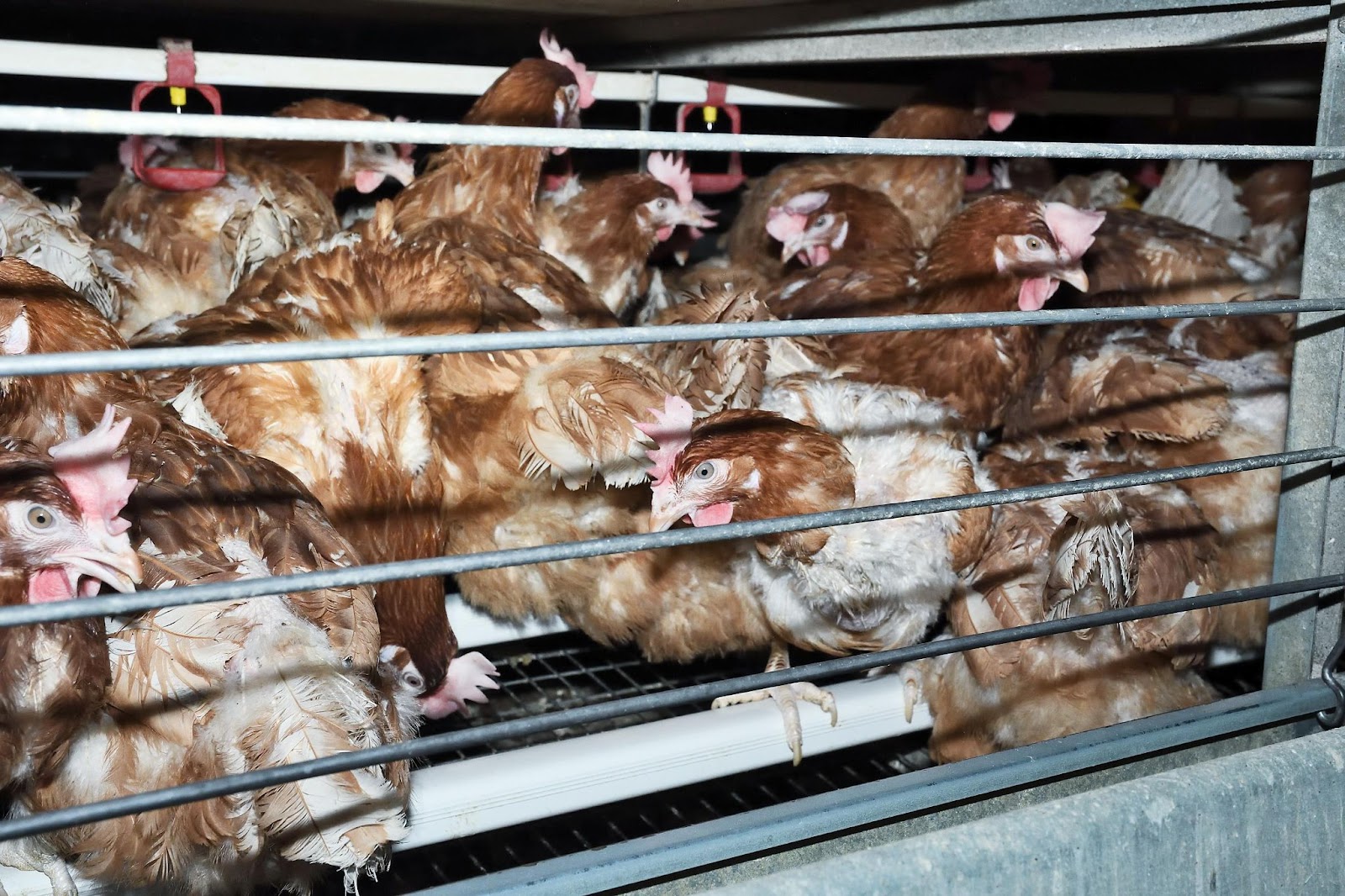
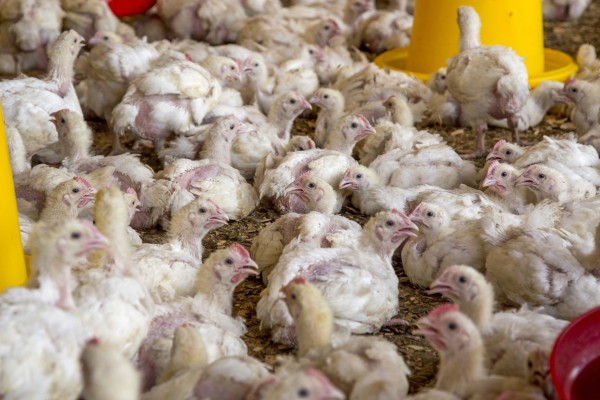
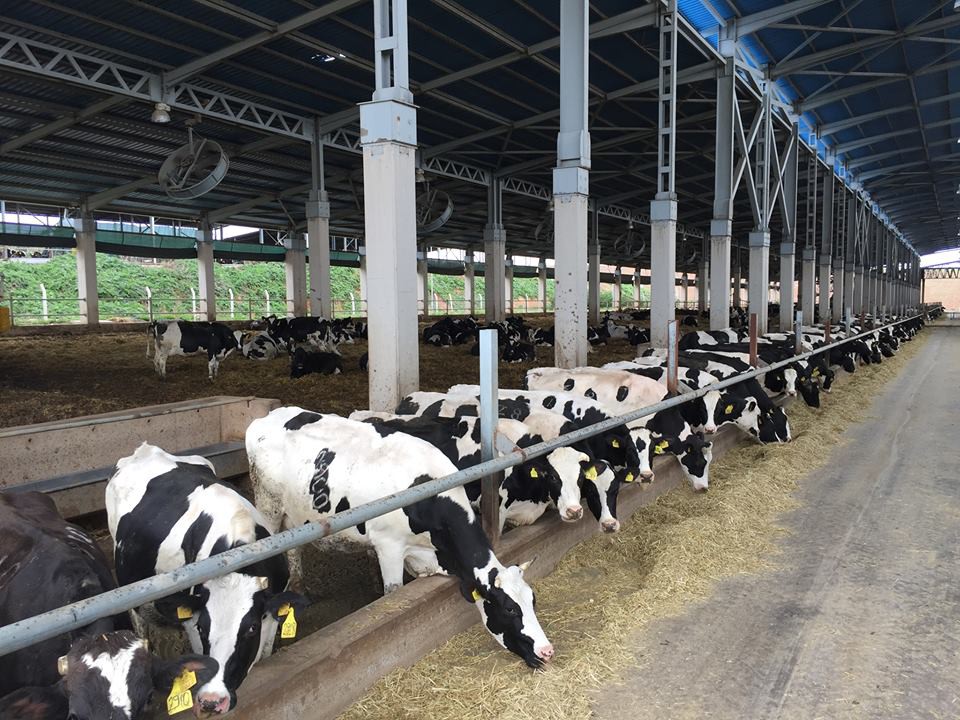
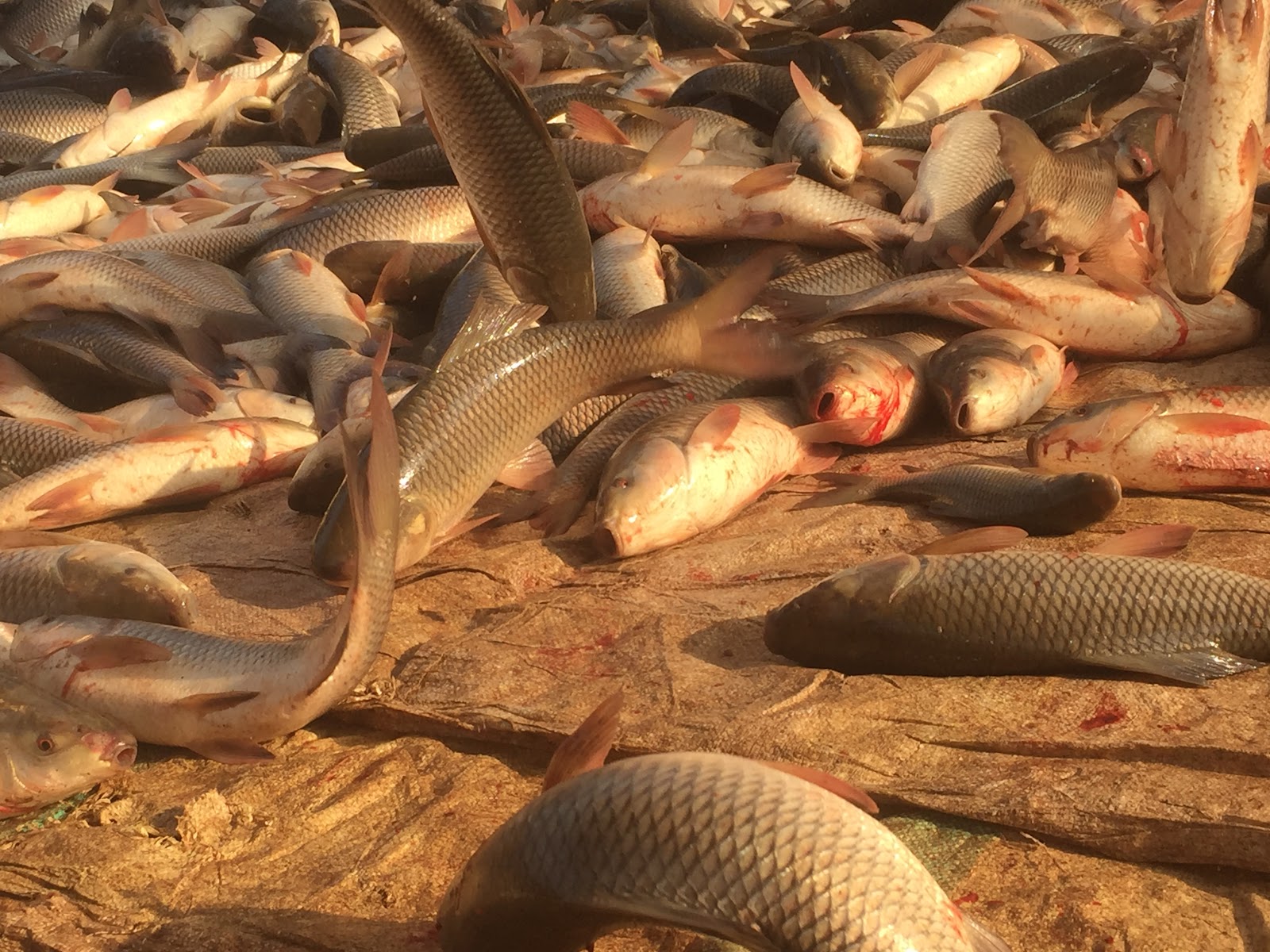
In order to show the asymmetry more clearly, here are some statistics:
In the US there are 2.23 billion broiler chickens vs. 94.3 million cattle.
In the US there are 325 million layer hens vs. 9.3 million dairy cows.
The US aquaculture industry produced 468 million kilos of fish meat in 2018 (excluding wild catch fish). The weight of each fish varies. But most of them are 1 to 2 kilos each.
Different calculations suggest that there may be over 100 times more animal suffering per animal product in egg, chicken and fish industry than dairy industry.

Source: https://jessegalef.com/2011/06/22/why-a-vegetarian-might-kill-more-animals-than-an-omnivore/
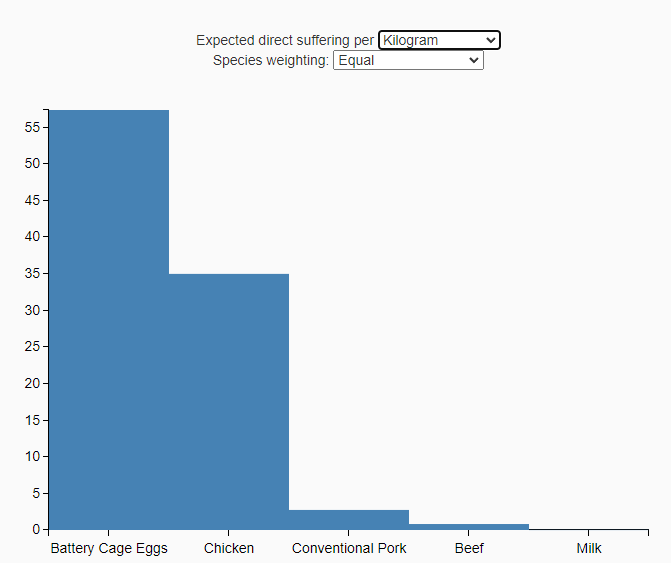
Source: http://sandhoefner.github.io/animal_suffering_calculator
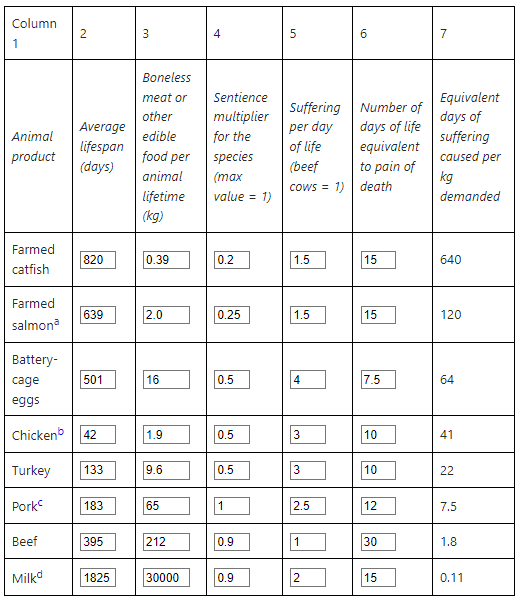
Source: https://reducing-suffering.org/how-much-direct-suffering-is-caused-by-various-animal-foods/
One can be skeptical about the importance of higher chicken and fish suffering in Asia and Africa, since the level of animal welfare is probably better in Asia and Africa than Europe and America. This is because animal agriculture is predominantly industrialized in Europe and America. While factory farming has not reached the same level in Asia and Africa for now, it is just a matter of time before industrial animal agriculture captures the majority of these markets as well. As a matter of fact, in most Asian markets this has already happened. This is due to the fact that factory farming is more efficient in terms of production and profitability. When economies grow and capital accumulates, more factory farms are likely to be built and outcompete small scale traditional chicken farmers and fishers in Asia and Africa.

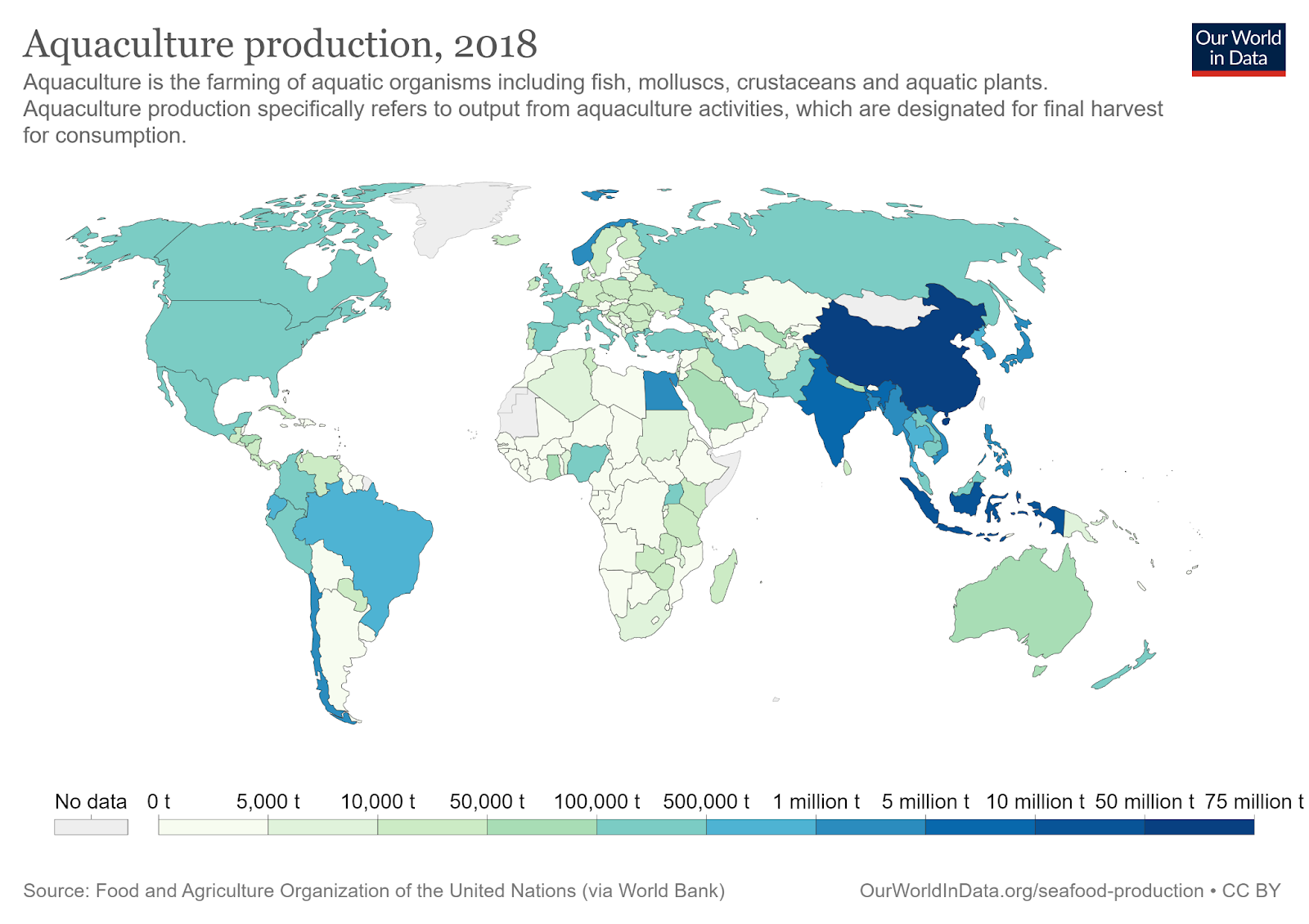
Finally, corporate animal welfare reforms for chicken and fish are also very limited in Asia and Africa. According to Chicken Watch there are only two local (not global) welfare commitments for layer hens in China, while there are none in India and Pakistan. Most animal welfare commitments in the world were achieved in countries which have more than 30.000$ real GDP per capita. This is expected, since corporations are likely to accept welfare standards which have higher costs, if they think their customers can continue to afford their products despite increases in price. It can take decades for developing countries to reach that level of prosperity, even if we take the steady increase of GDP per capita to these levels as granted. Many countries in Asia and Africa already are or will be rich enough to produce and consume factory farmed eggs, chicken and fish, but they will not be rich enough to willingly accept comprehensive animal welfare reforms. Lastly, higher GDP per capita does not also translate immediately to higher animal welfare. Corporate welfare commitments are not very numerous in Japan and South Korea which are very rich countries even by western standards. So, one should not be very optimistic about the level of future chicken and fish welfare in Asia and Africa.
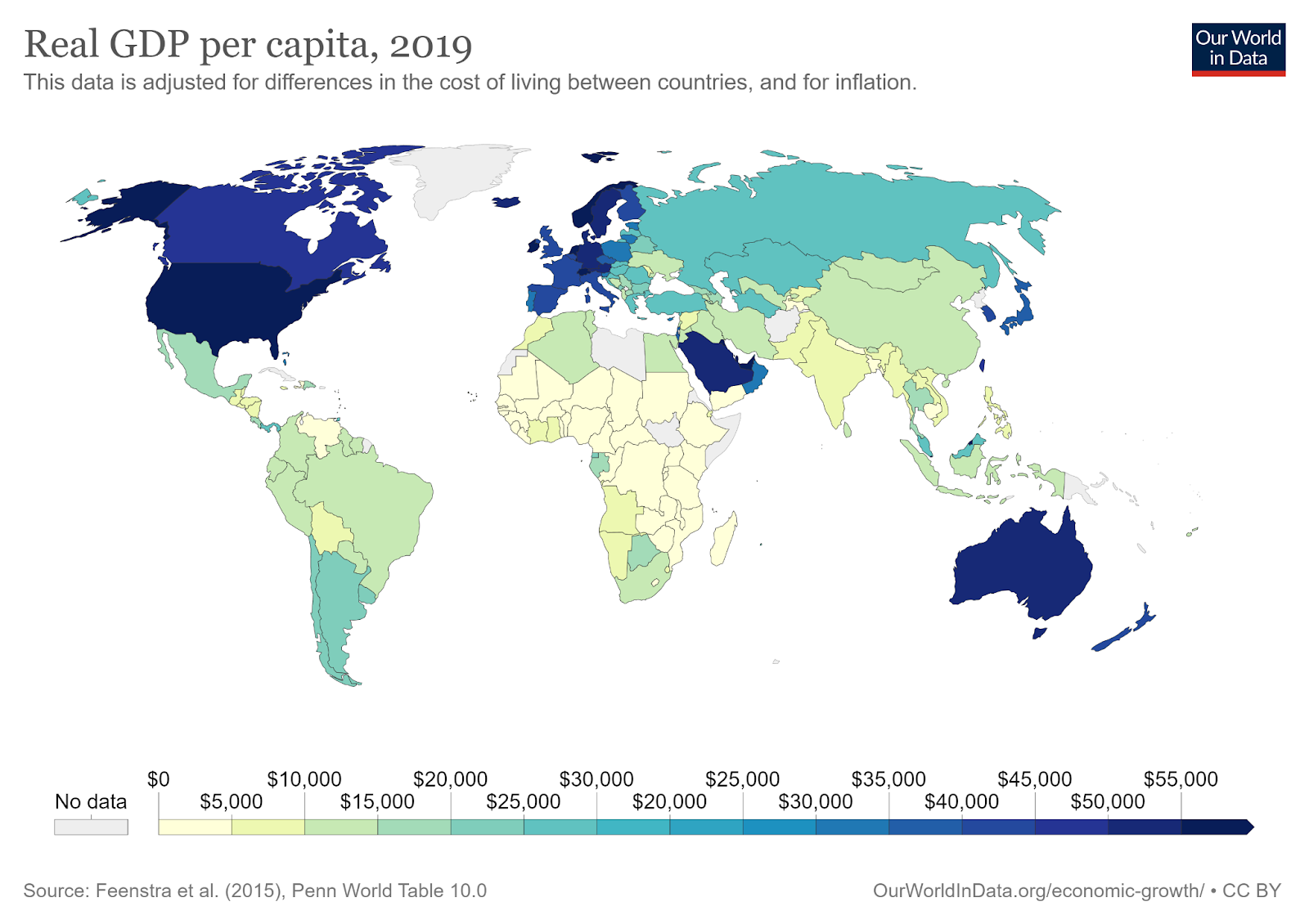
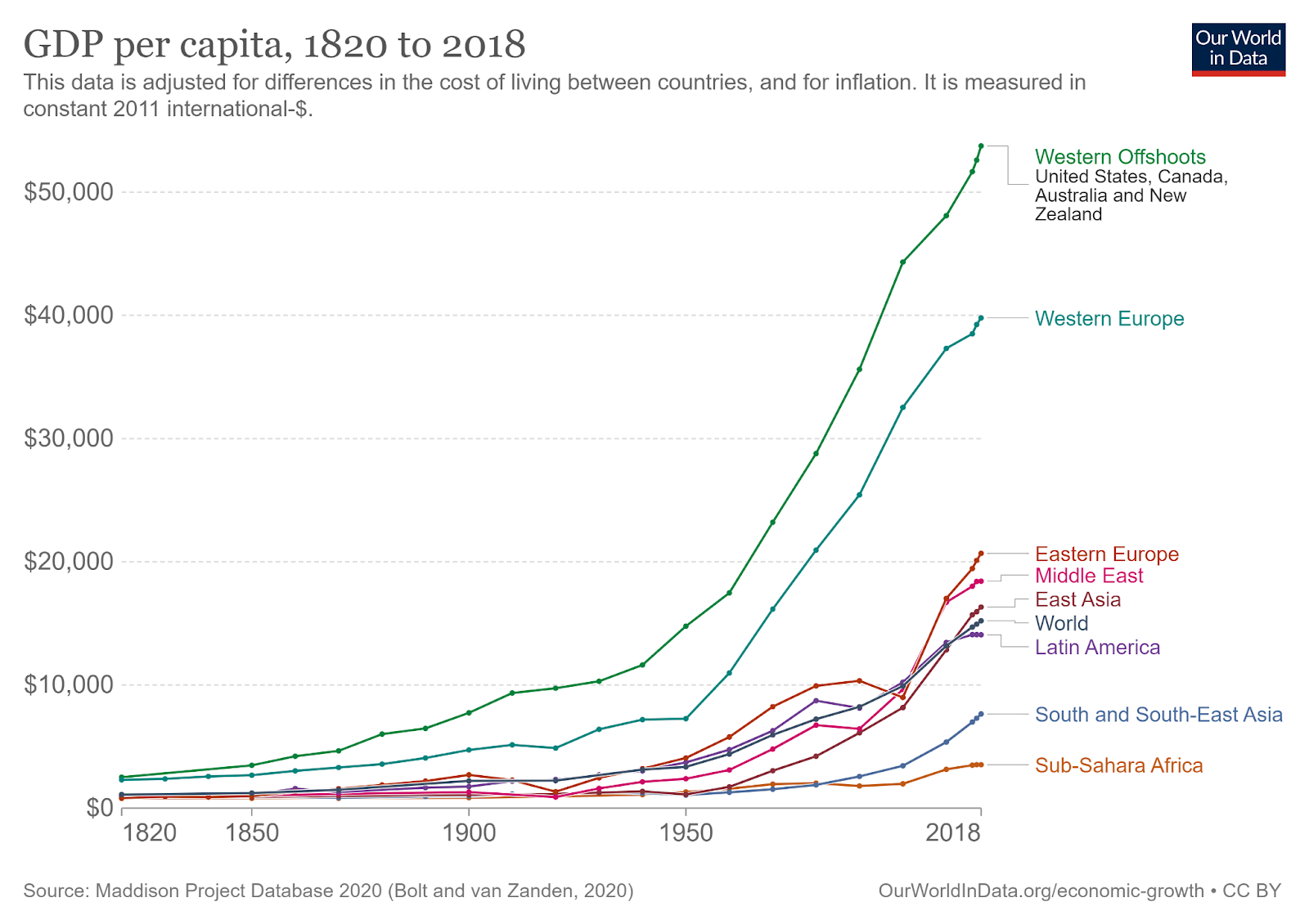
For these reasons, chicken and fish suffering constitute the overwhelming majority of the total farm animal suffering in the world (including Asia and Africa). If one wants to significantly reduce total farm animal suffering in the world, one has to aim to impact chicken and fish.
Importance of Asia and Africa
The total animal suffering in the world can be calculated by looking at four statistics: population, animal product consumption per capita, shares of different types of animal products per capita, level of animal welfare in different sectors of animal industry.
Asia and Africa are very important regions because the majority of the human population (about 6 billion) live in these regions. These regions will become even more important in the future since future population growth will occur primarily in Africa and Asia. In UN Population Division (2019) medium variant scenario projections it is projected that in 2050, total population in Asia will be 5.3 billion, in Africa it will be 2.5 billion, while world population will be 9.7 billion. For 2100 it is projected that the total population in Asia will be 4.7 billion, in Africa it will be 4.3 billion, while world population will be 10.9 billion.
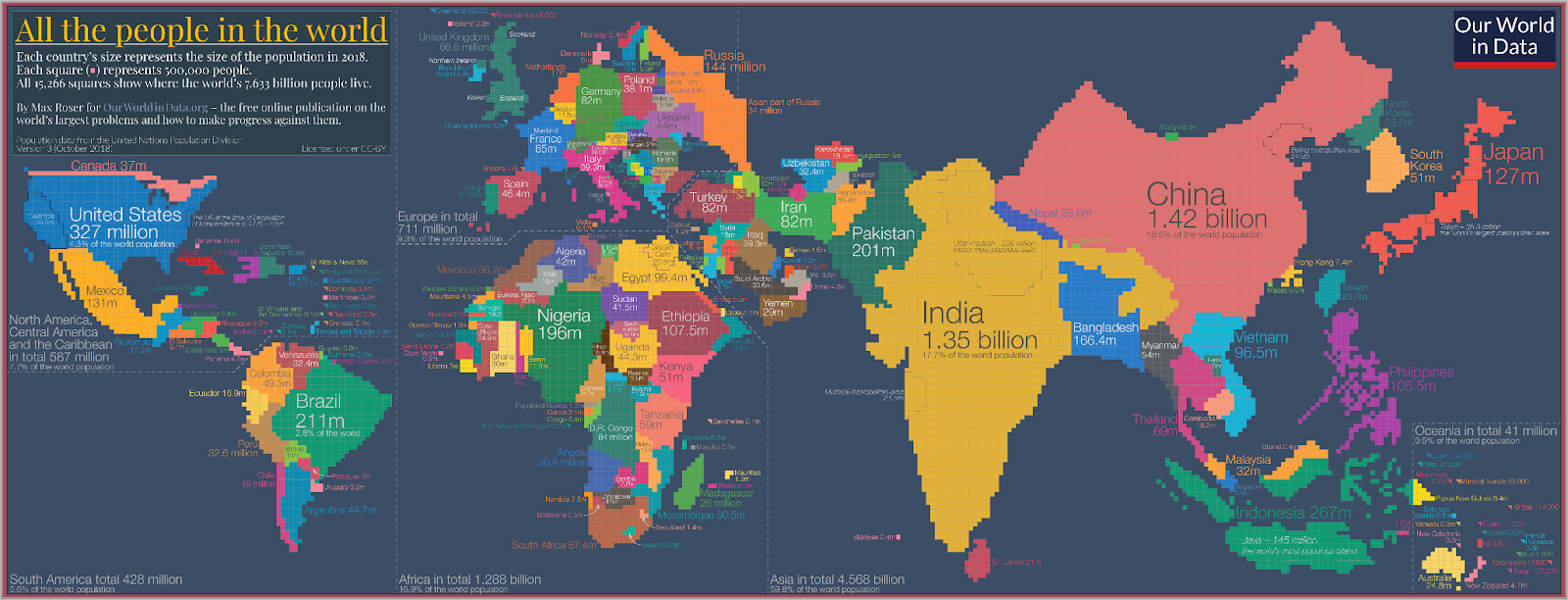
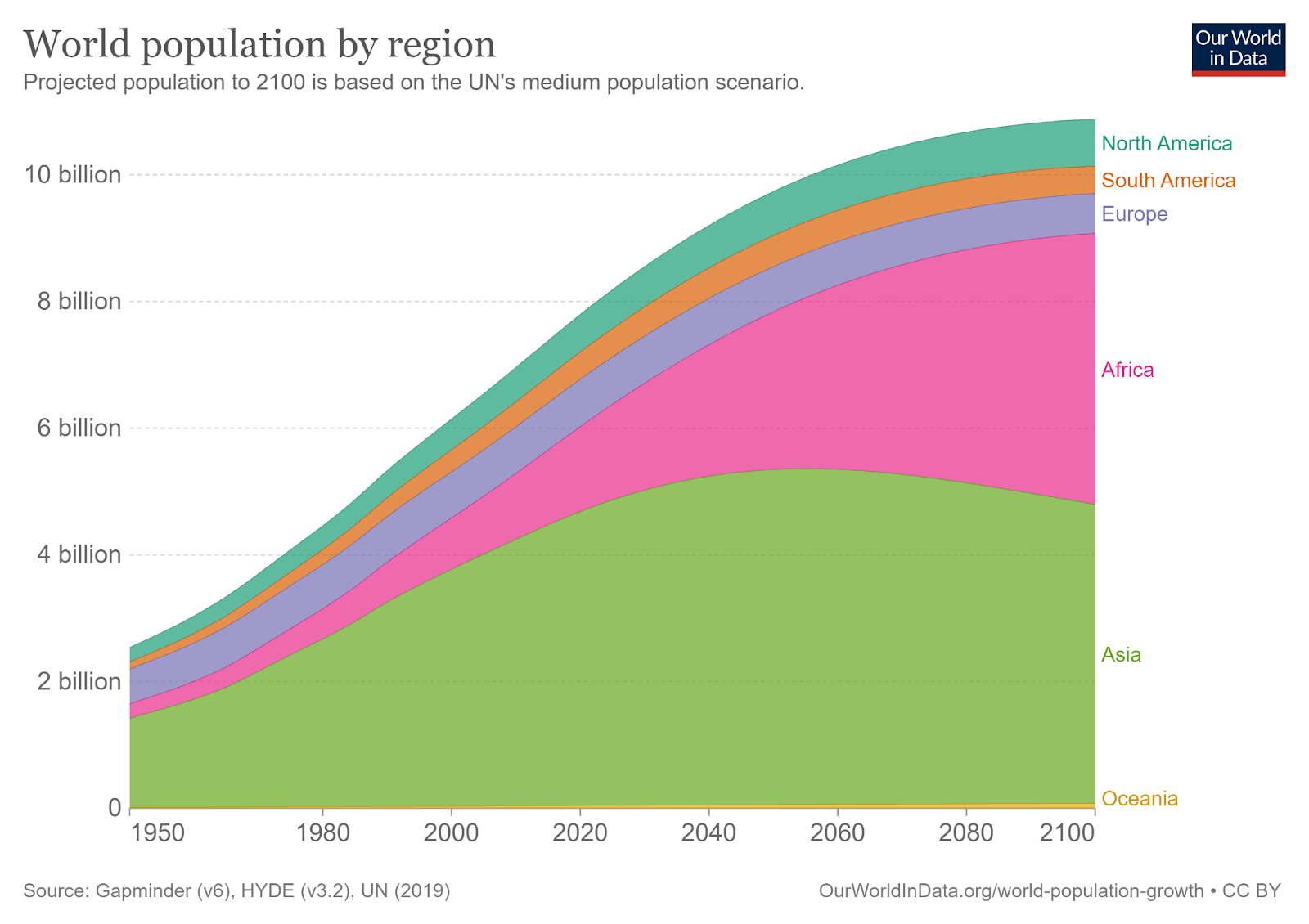
Since GDP per capita in these regions are not as high as in Europe and America, animal consumption per capita is low relative to Europe and America. But even if animal product consumption per capita is lower, due its huge population Asia consumes more animal products than other regions. Africa on the other hand has much lower GDP per capita and animal product consumption. For this reason, even if Africa has a large population, its animal consumption in absolute terms is low, for now.
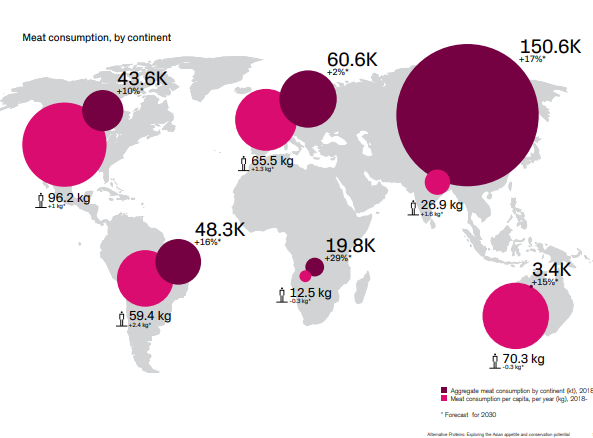
Source: Credit Suisse Report: Alternative Proteins: Exploring the Asian appetite and conservation potential
Things will significantly change when these regions’ economies grow. When countries get richer they tend to consume more animal products. We can already see that in China where animal product consumption is growing rapidly. South Asian and East Asian countries will also grow significantly in the near future. This will probably increase their animal product consumption per capita levels. Economic growth in Africa is not expected as soon and as big as in Asia for the near future, but one can expect that by 2100 Africa can also experience significant economic growth.
For these reasons, the majority of animal product consumption does and will occur in Asia and Africa. If one wants to significantly reduce total animal suffering in the world, one has to aim for impacting Asia and Africa.
Importance of the dairy gap in Asia and Africa
Although dairy constitutes 30 to 45 percent of animal protein consumption in Europe and North America, it constitutes 0 to 15 percent of animal protein consumption in Asia and Africa. Per capita dairy consumption in absolute amounts is also significantly low in most of Asia and Africa.
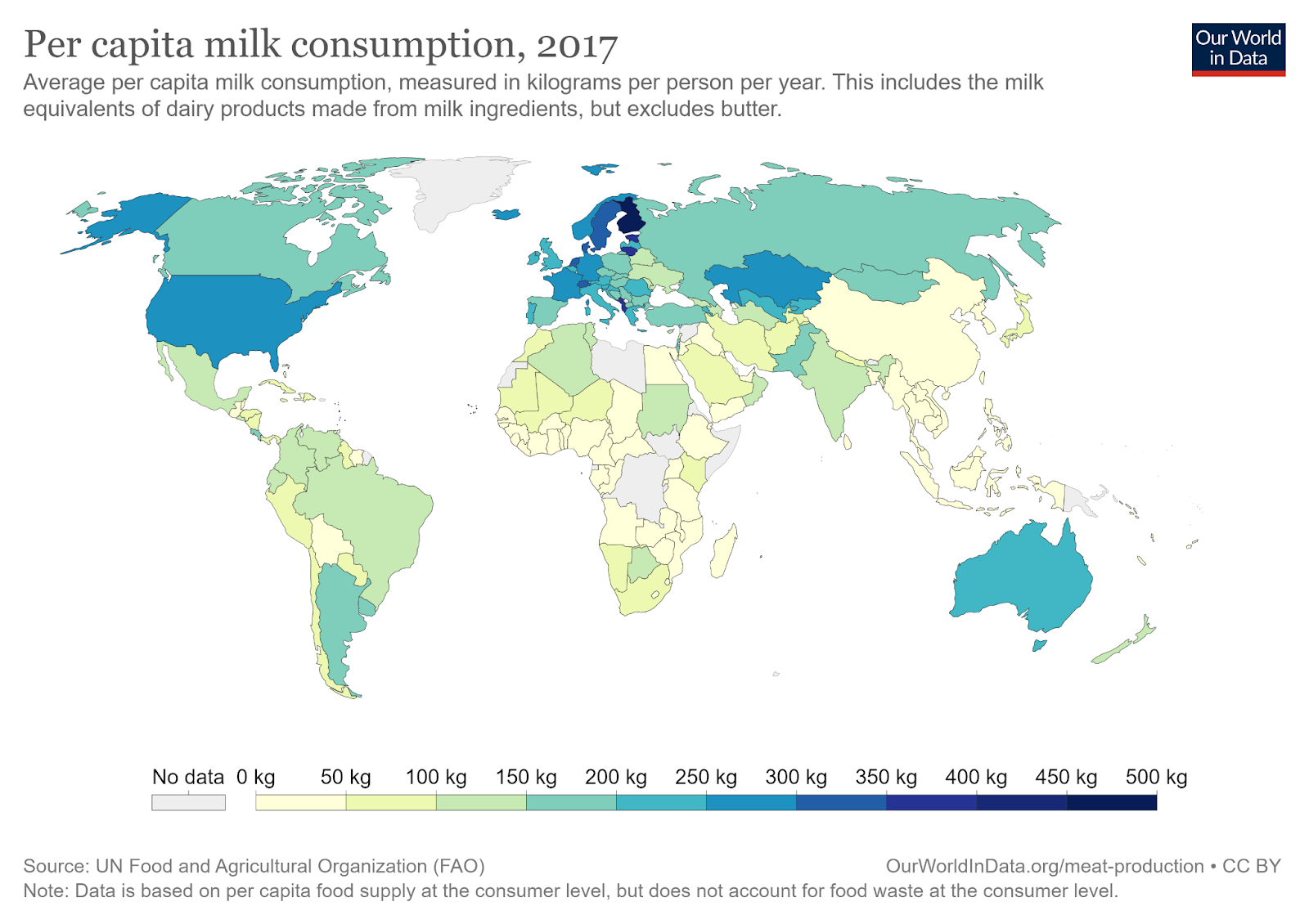
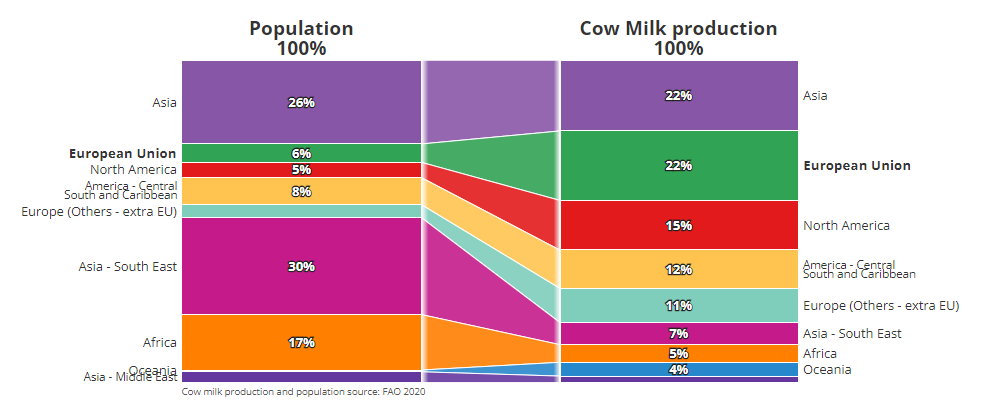
From: https://www.clal.it/en/?section=produzioni_popolazione_world
There are multiple and country specific reasons for this gap. In Europe and North America, farmers traditionally raised high milk yielding cows. Holstein-Friesian breeds provide very high amounts of milk per animal (15-30 kilos of milk per day) which allows higher production and consumption of dairy. These breeds have lower heat resistance but that does not matter in Northern parts of the world. On the demand side, lactose intolerance is low in Europe and North America, and the cuisines in these regions frequently include dairy in their dishes.
In Asia and Africa, on the other hand, indigenous dairy animals are generally low milk yielding. These animals are usually multi-purpose, and can be reared in climates which are not temperate as in Europe or North America. Animals such as goats, sheep and buffaloes also constitute a significant share of dairy livestock. These animals are adapted to local conditions, thus are easier to rear. But this comes at a cost of lower milk yield (low as 1-2 kilos of milk per day). On the demand side, the cuisines in these regions include fewer dairy in their dishes. This may be due to a lower preference for dairy since lactose intolerance is high in Asia and Africa (low market demand). But in Asian and African countries with rising dairy supply, dairy consumption also increases, which suggests that low market demand and dairy excluding cuisine culture is at least partly a result of low dairy supply.
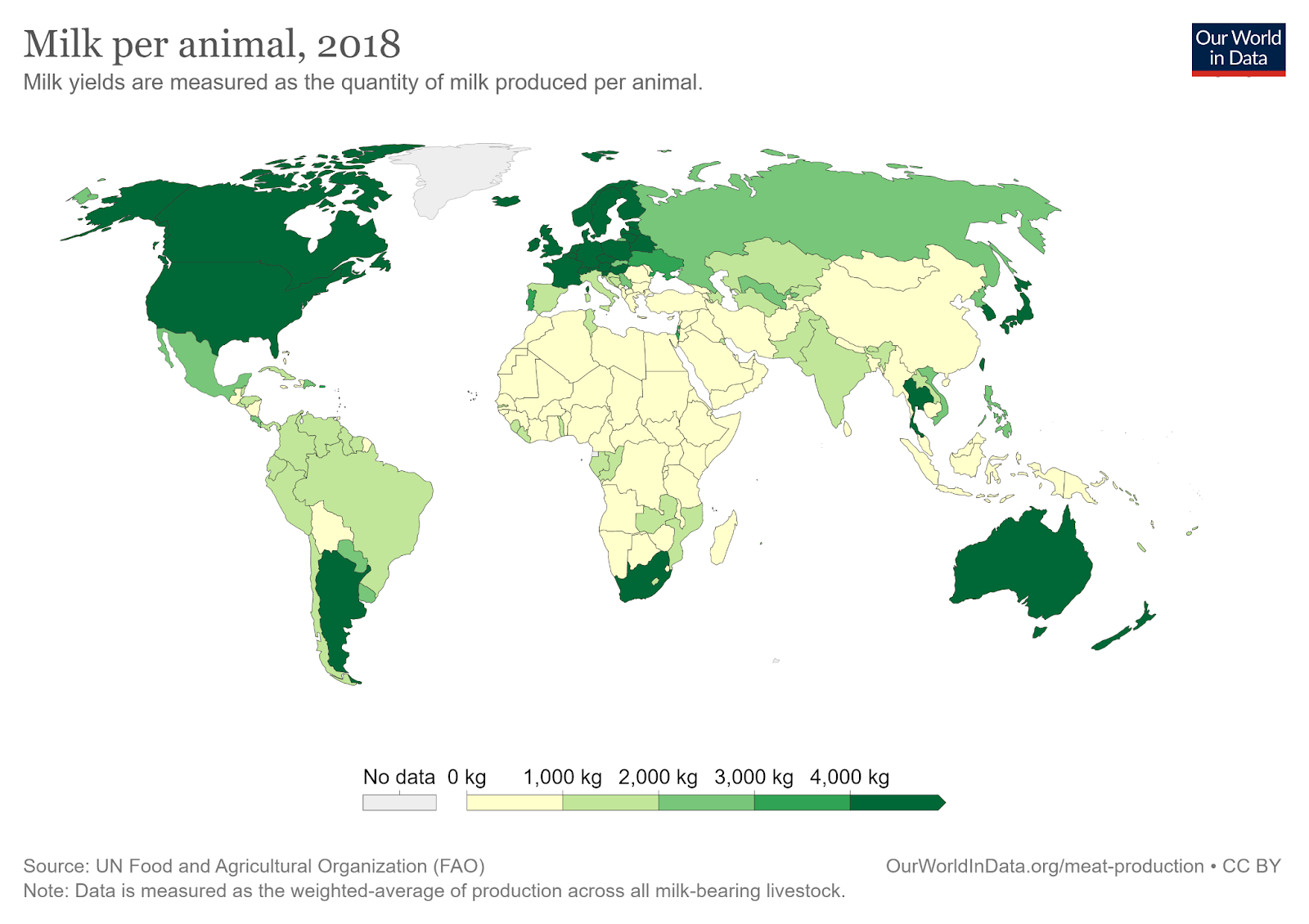
Since households typically consume some amount of animal products relative to their income, low consumption of dairy is likely to be compensated by higher consumption of other animal products such as eggs, chicken, fish, pork, beef. Meals typically consist of three components: carbohydrates (Wheat or corn bread, flakes, rice, pasta, noodles, potatoes), protein (eggs, milk, cheese, yogurt, ham, pork, fish, chicken, beef, beans, mushrooms, lentils, nuts) and fiber (fruits and vegetables). Most meals are the combination of a unit of each of three categories.
Most households typically prefer to consume at least some animal products as their protein source. This may be due to taste and/or perceived high nutritional value of animal products. If a household cannot buy price competitive, quality dairy products often, it is likely that it consumes more of other animal protein sources. For example, if a person does not typically drink milk or eat cheese at breakfast, that person is likely to eat more eggs. Or if a person typically does not eat cheese or yogurt, that person is more likely to eat more meat such as chicken and fish. I will make the assumption that dairy is a substitute good for eggs and meat. And its consumption is inversely proportional with the consumption of other animal products. One can see the relationship between milk and eggs; or cheese and eggs; or cheese and meats; or yogurt and meats.
These theoretical assumptions seem to be true if we compare countries with different shares of animal protein consumption:
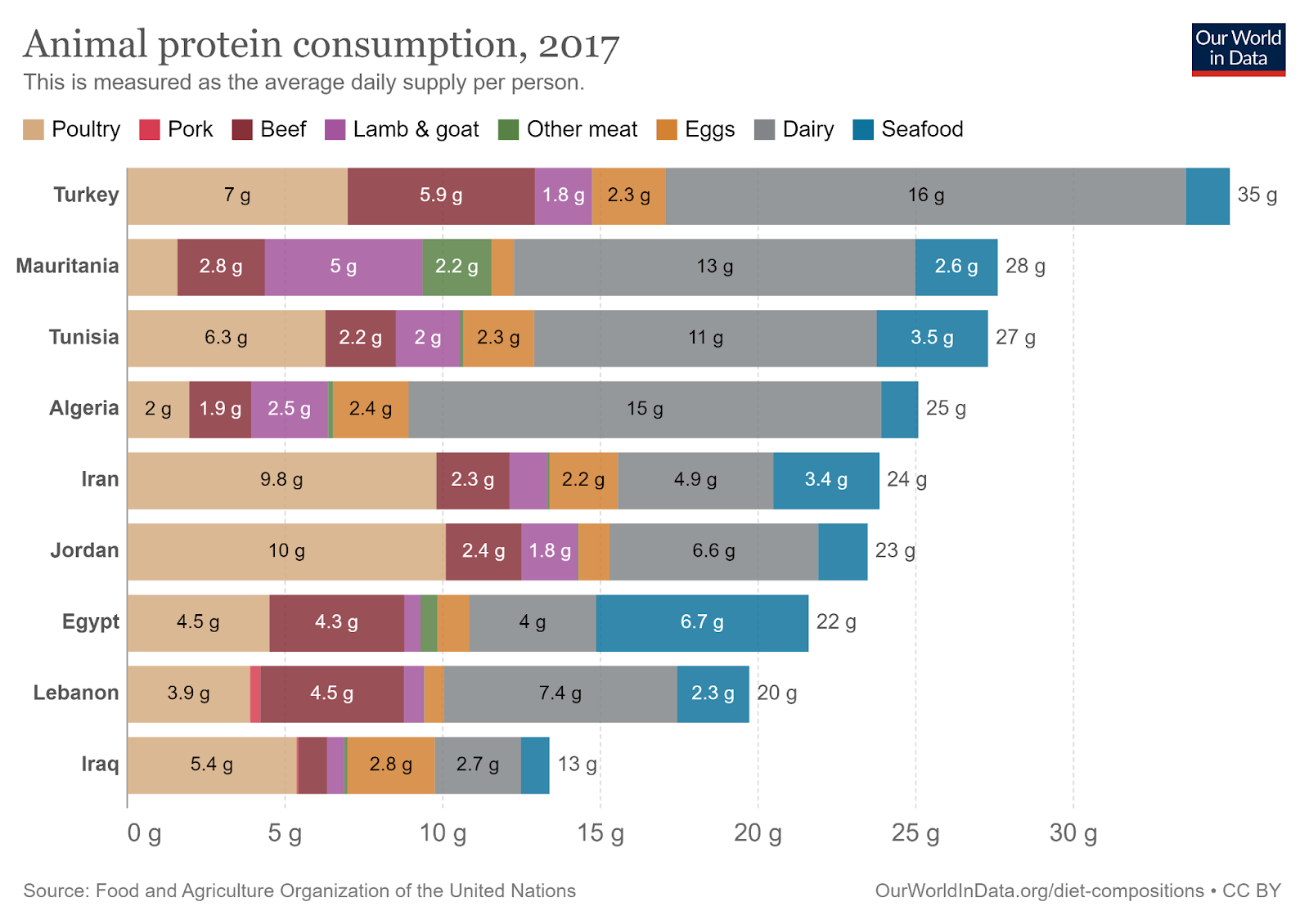
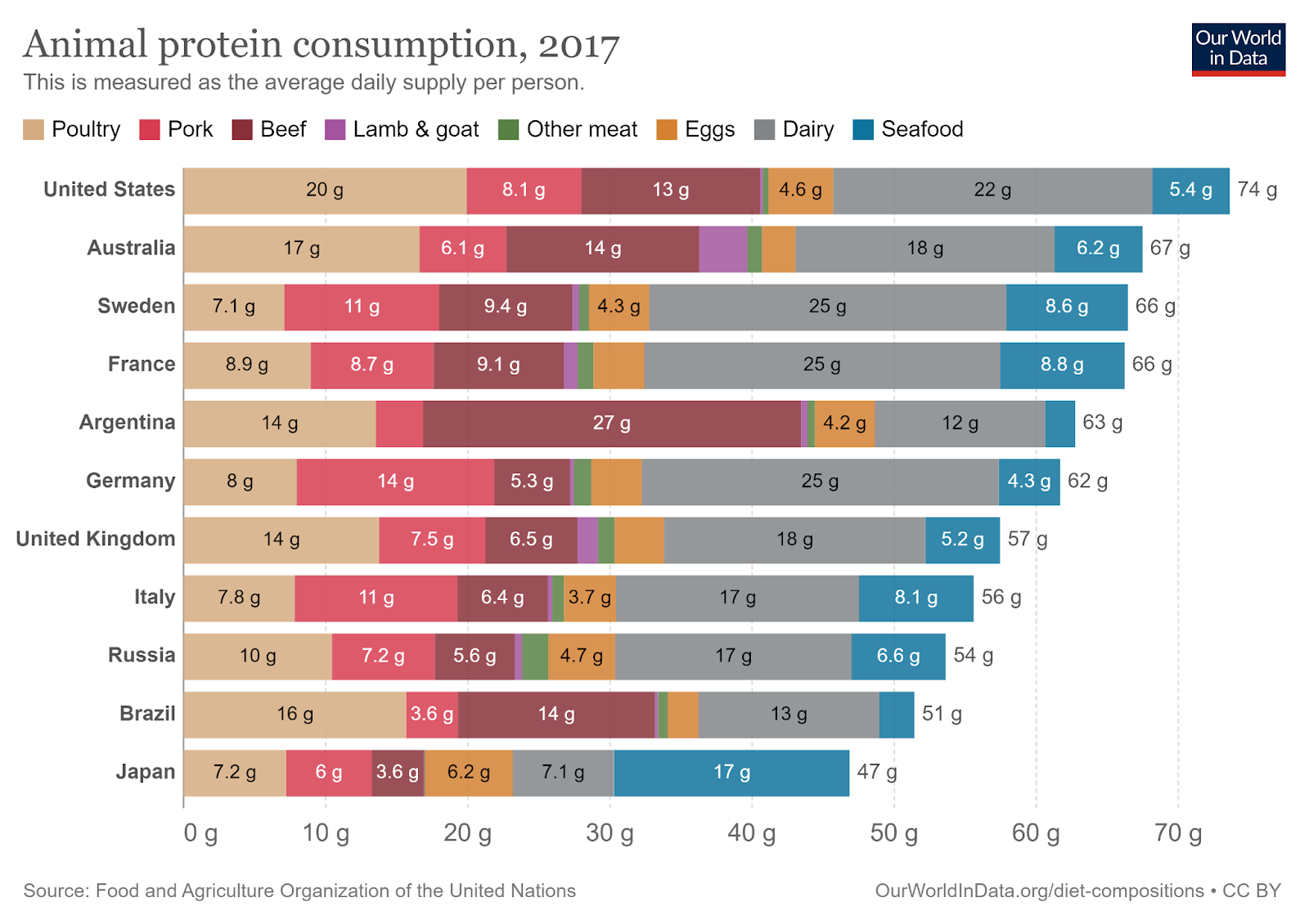
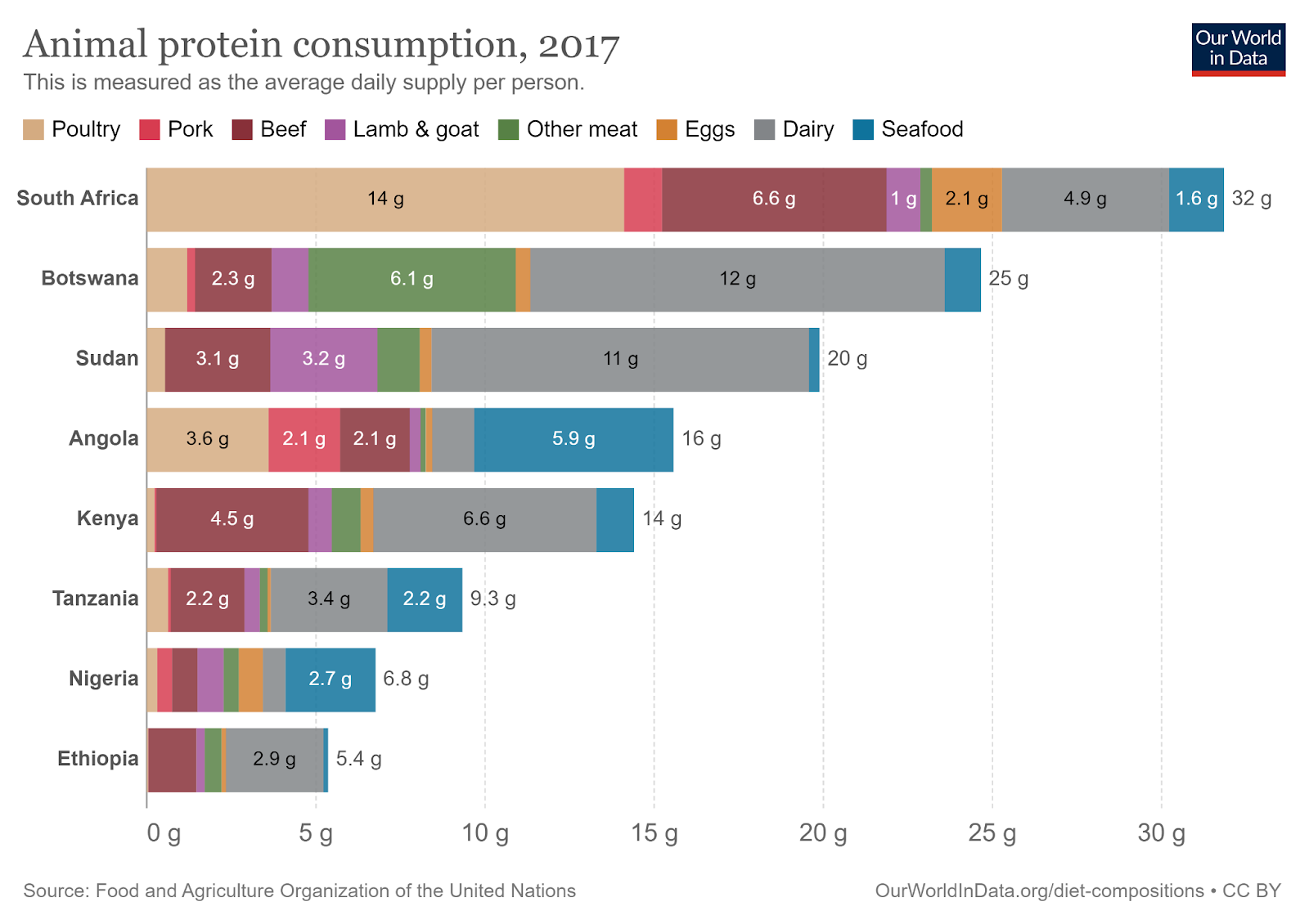
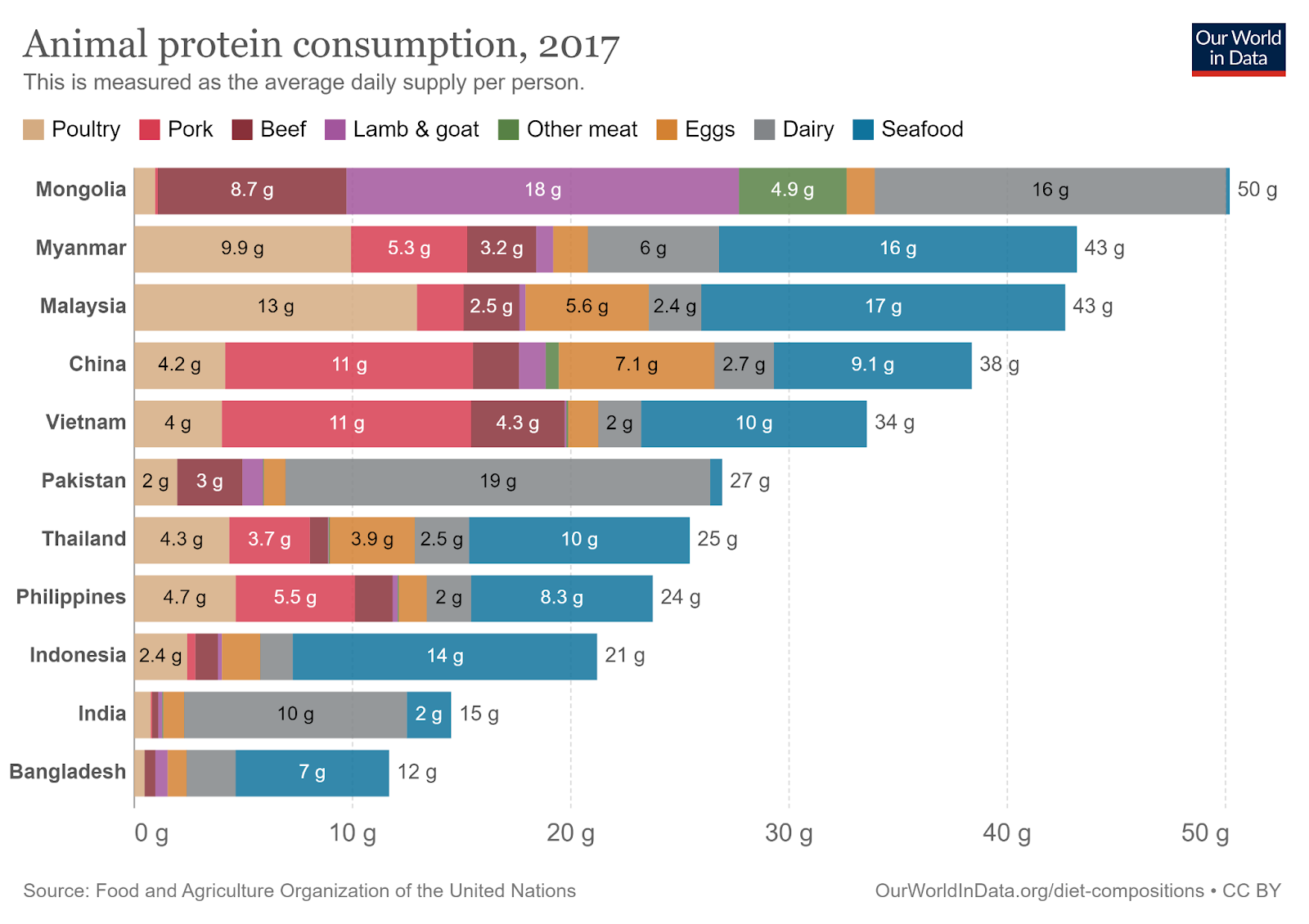
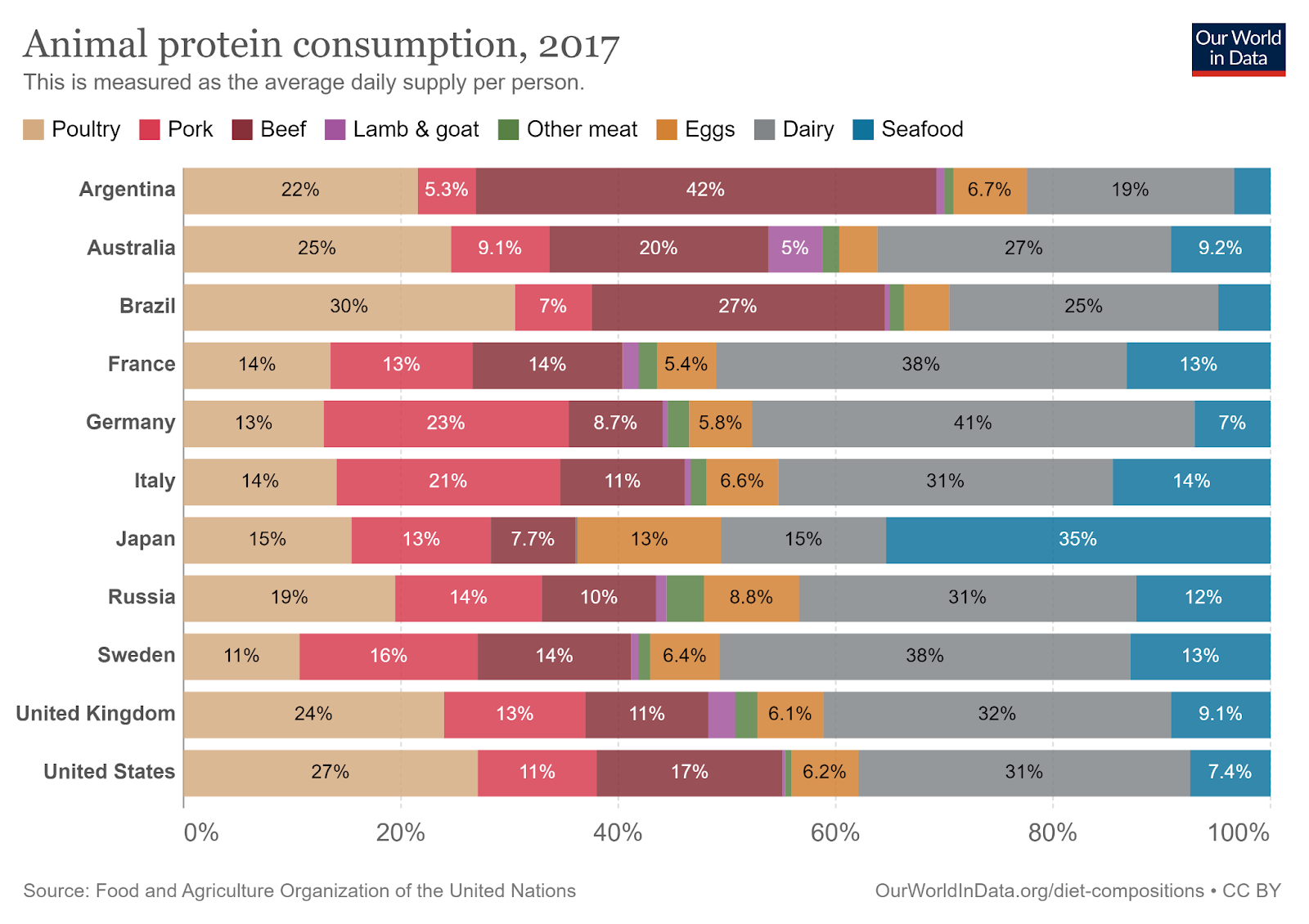
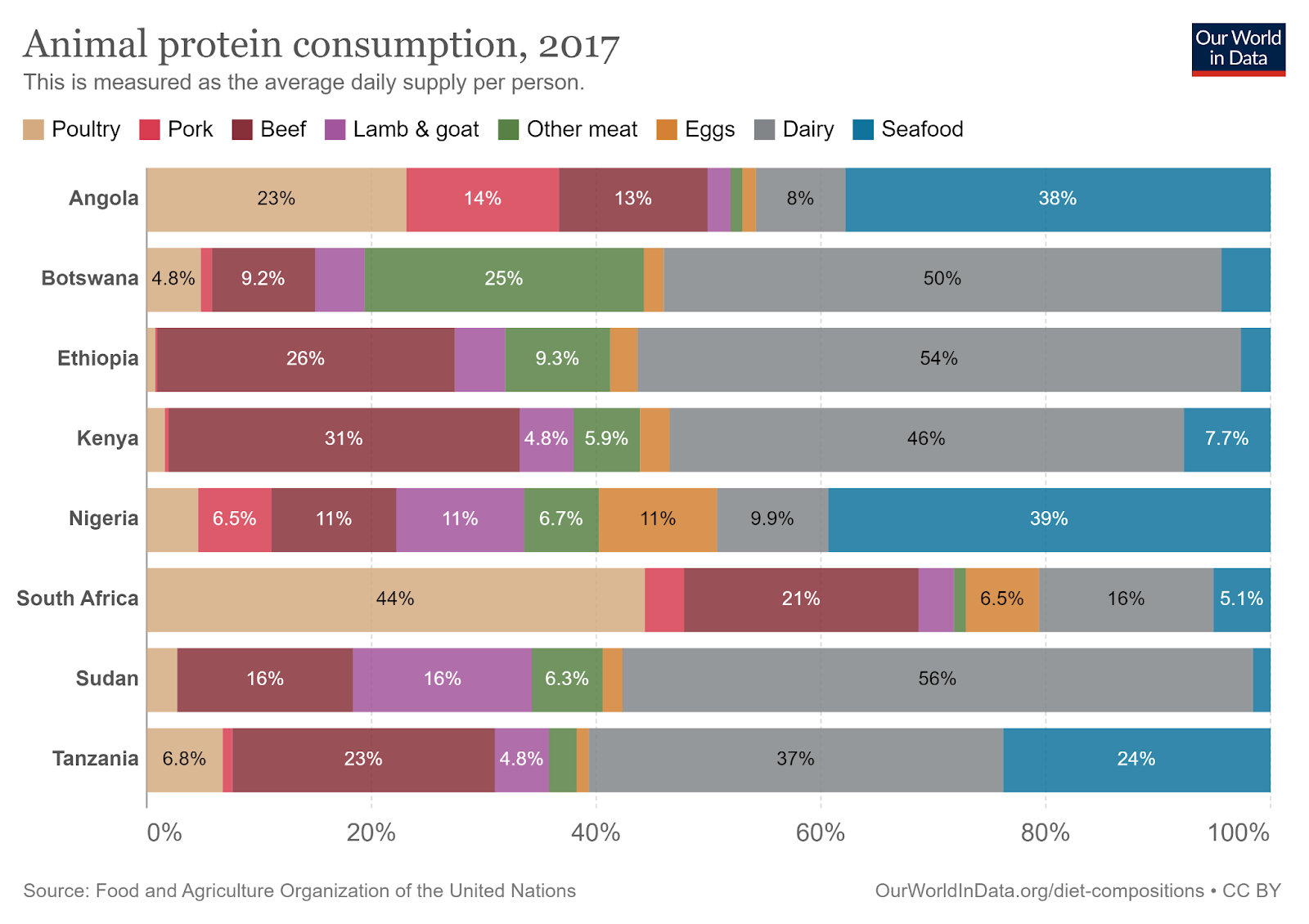
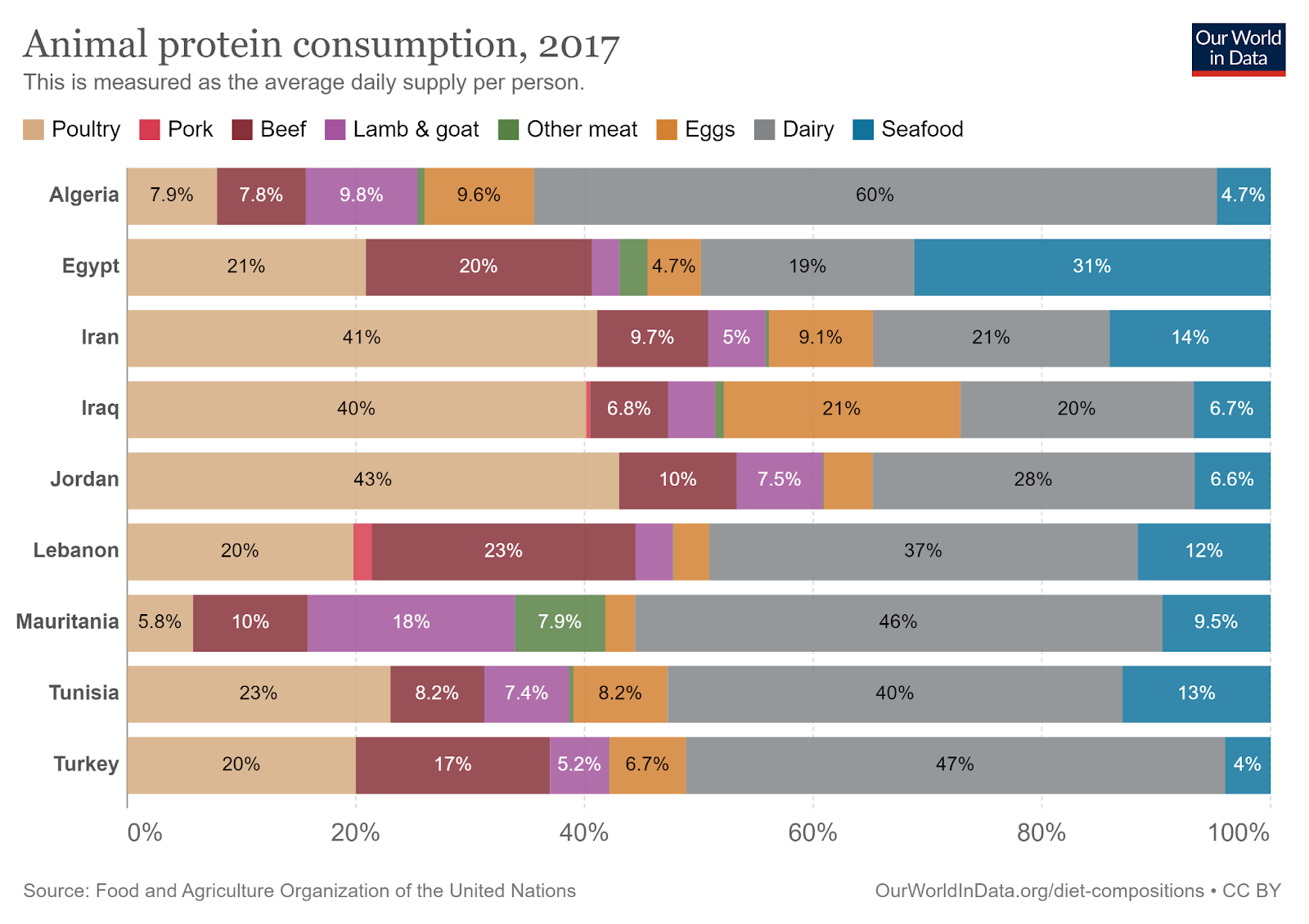

As one can see clearly, in India, Pakistan, Turkey, Kenya per capita dairy consumption is high while fish, egg and chicken consumption is lower while in China, Indonesia, Philippines, Malaysia, Nigeria per capita dairy consumption is low while fish, egg and chicken consumption is high.
If one wanted to create the same graphs for “animal suffering”, one could almost erase the gray and dark red parts (dairy and beef) and significantly widen the tan, orange and blue parts (poultry, egg, fish).
If these assumptions about animal protein substitute goods are true, then one can make the argument that low dairy supply and consumption in Asia and Africa is and will be a major factor for higher animal suffering in the world.
In conclusion, a significant source of the total farm animal suffering in the world is and will be the relative higher share of chicken and fish in the total consumption of animal products in Asia and Africa due their dairy gap. If one wants to significantly reduce total farm animal suffering in the world, closing this gap has major importance.
Some other important side effects
The “beef gap”
Undeveloped state of dairy in Asia and Africa also results in lower beef production as well since dairy cows are also slaughtered. This supply of red meat also has a substitution effect on other animal products. I do not focus on this issue, because this has a smaller scale and beef is not very price competitive against eggs, chicken and fish.
Poverty reduction and economic growth
Institutions like the World Bank, United Nations Food Organization Agency, United Kingdom Department of International Development, New Zealand Foreign Affairs Ministry, Japan International Cooperation Agency have supported dairy projects in developing countries (India, Pakistan, China, Sri Lanka, Kenya, Bangladesh, Thailand, Vietnam). The main aim of these interventions was not of course mitigating chicken and fish suffering at all. But these institutions concluded that these development investments are at least reasonably cost effective in order to achieve poverty reduction and economic growth. These are of course less effective than Give Well’s list of most effective interventions for global development and health, but one can nevertheless conclude that this potential cause area would also have at least decent poverty reduction and economic growth potential as well.
Higher share of eggs, chicken and fish is making animal welfare reforms harder
If the share of eggs, chicken and fish remain high as it is in Asia and Africa, the absolute and relative cost of animal welfare reforms will also be higher for corporations such as retailers, hotels and catering companies. Lowering or limiting these shares will also lower the cost of animal welfare reforms which allows animal welfare advocates to convince or to coerce corporations to accept higher welfare standards. For example, a retail chain would be more likely to negotiate and accept a cage-free commitment if egg sales constitute a smaller share of its revenues.
Lower share of dairy and beef is making alternative protein adoption harder
Majority of alternative protein products are plant-based dairy and plant-based beef. Future cultured animal products will probably also be focused on milk and beef. Lower share of dairy and beef in Asia and Africa, allows a smaller entry point for alternative protein products to go into the market. Having a larger market share of animal based dairy and beef in these regions’ cuisines would make it easier for plant-based dairy and beef products by allowing them to compete in a larger market.
Tractability
Although further increasing the share of dairy in Europe and America is not very tractable since the food industry has already matured and established in these regions, this is doable in Asia and Africa since the food industry, dairy industry in particular, has not saturated yet. It can take decades before the food markets and cuisine cultures become mature and established in these regions.
How can the dairy gap be closed?
There are multiple ways to close the dairy gap in Asia and Africa:
Introduction of high milk yielding cow breeds: Exotic breeds such as Holstein-Friesian cows can provide significantly more milk than other breeds (and other dairy animals such as goats or buffalos). This can be done by importing live animals. Exotic breeds are the most efficient dairy animals which creates the highest amount of milk. Farmers can locate their dairy farms in places where climate is more temperate and/or they can protect their animals from heat by good farm design and ventilation. (Videos from China, Vietnam, Thailand, Kenya)
Crossbreeding existing dairy animals with high yielding breeds: One can also increase output and efficiency by changing the genetic material of the livestock. Artificial insemination of existing breeds allows to keep the heat resistance feature of the existing livestock while significantly increasing milk yield. Artificial insemination is also less expensive than importing live animals. (article)
Increasing feed quantity and quality: More and better quality feed results in higher yields in dairy farming. Farmers who can’t access or afford high quality feed, generally feed their livestock with low quality roughage such as rice straws. (link)
Improving dairy welfare and health: Efficiency is usually a dirty word in animal advocacy since efficiency gains are usually achieved by extremely confining animals to crowded spaces. Some efficiency gains in dairy farming also do require some loss of animal welfare such as zero-grazing systems. But even in zero-grazing systems extreme confinement is not necessary for higher efficiency. Most animal welfare improvements such as providing adequate space, clean bedding and good ventilation improve milk yields. Preventing and treating diseases such as mastitis and foot-mouth disease are also very important.
Educating farmers: There may be many rural farmers in Asia and Africa (just like elsewhere), who could benefit from learning efficient farm management and animal husbandry skills. Some rural farmers are unaware of the benefits of cross breeding, feed concentrates, animal welfare and health standards. Providing these information and skills can significantly improve efficiency.
Investing in milk processing facilities and infrastructure: Milk can be consumed raw or processed. Dairy processing significantly increases the durability and safety of milk by pasteurization and homogenization. Processing facilities can also produce products like cheese, cream and yogurt which are nutritionally dense, tastier and easily digestible, especially for the lactose intolerant. Creating supply chains between farms, milk processing facilities and retailers allows farmers to increase their production since more milk can be used and consumed in urban areas.
Can the dairy gap be closed?
Some Asian and African countries have closed the dairy gap to some extent. India and Pakistan have steadily increased their absolute and per capita milk consumption since the 1980s. Some other notable examples are Thailand, Vietnam, Kenya and Tunisia. China has also increased its milk production significantly but due to its large population, per capita dairy consumption is still low.
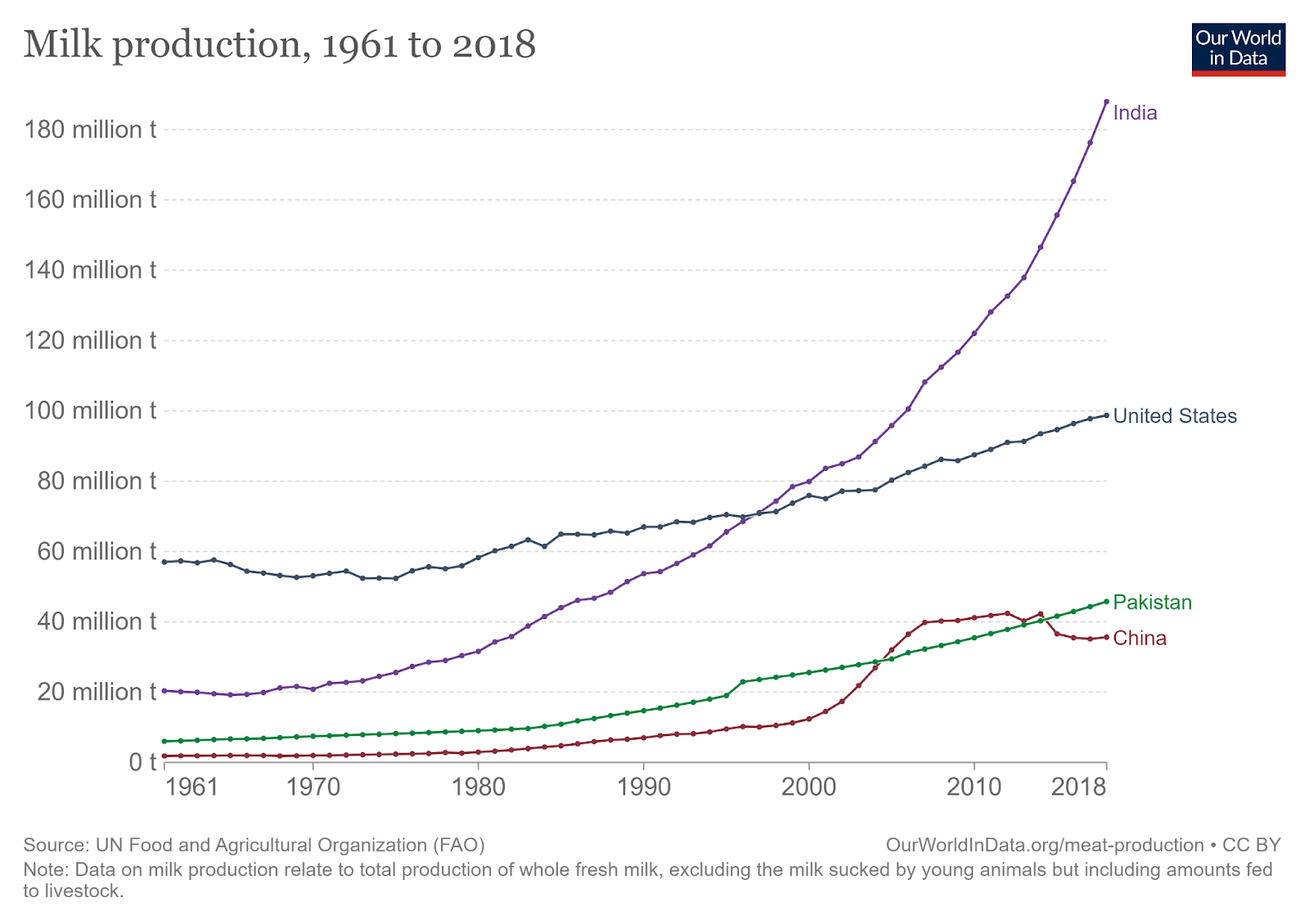
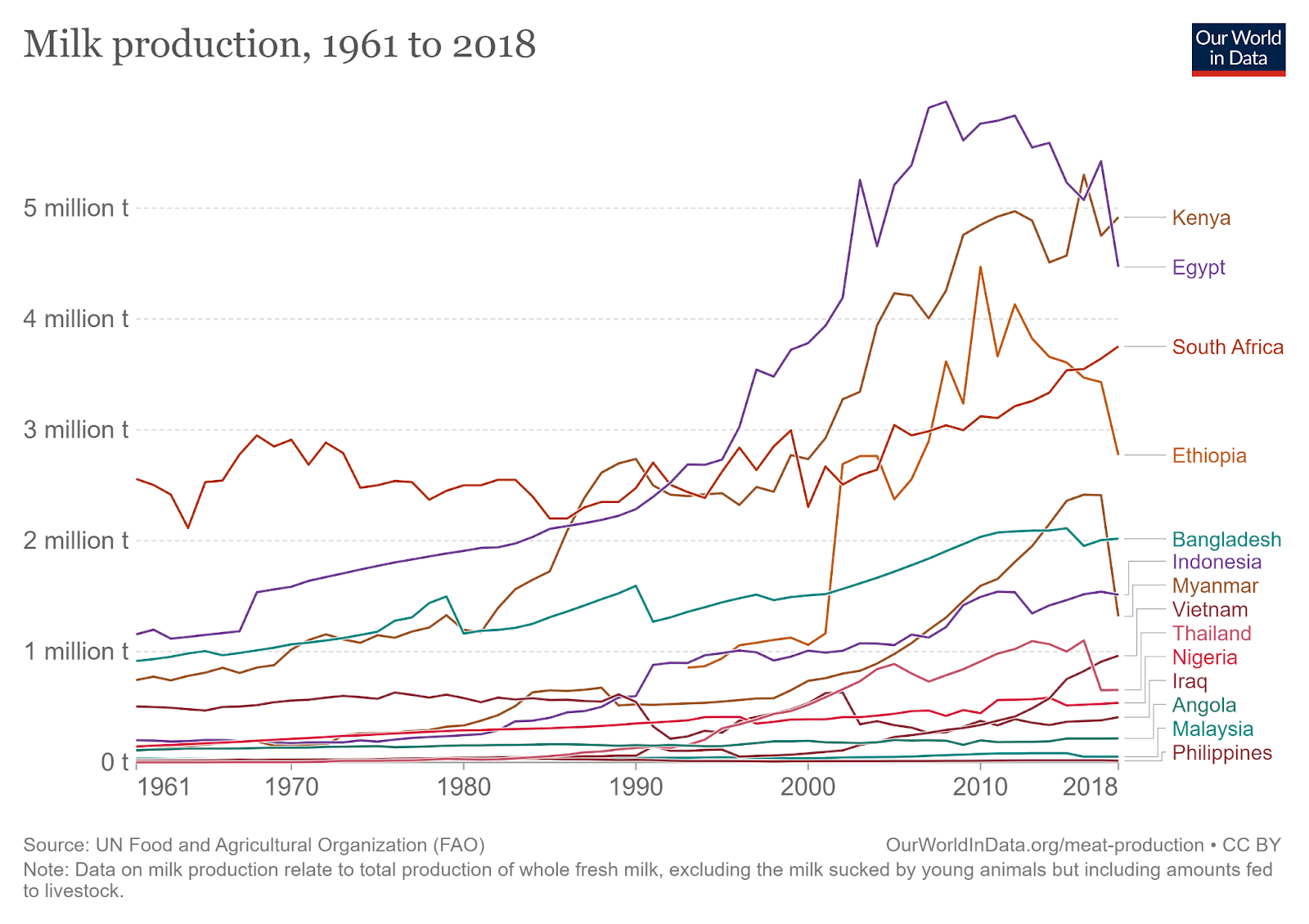

These examples suggest that if certain conditions are met, the dairy gap can be closed in Asia and Africa. Investment, technical assistance, foreign aid, government and corporate leadership are important factors. Here are some sources which explains their growth in dairy sector: India and Pakistan (growth by supporting and improving small-scale farmers), China (growth by large-scale farms), Thailand (growth by state-run company and foreign techinal assistance), Vietnam (growth by leader private firms which partnered with foreign companies), Kenya (growth thanks to temperate climate and the existing high milk yielding cows brought by British "settlers" and government policies). Also as pointed out above, foreign development aids were also beneficial: (India, Pakistan, China, Kenya, Thailand, Vietnam).
Some countries also import a lot of dairy products, mainly milk powder. China, Philippines, Algeria, Egypt, Nigeria are importing large amounts of dairy, while European Union, United States and New Zealand are important exporters. Imports may also be useful for increasing dairy consumption and thus decreasing chicken and fish consumption. But since most imports are milk powder, they are not fresh and high quality. Imports also raise the prices since one has to pay for transport as well. High levels of imports also suggest that there is a significant demand for dairy in Asia and Africa, and increasing local production capacities which can provide more and better quality dairy products can further increase demand and consumption.
Even if the dairy gap closes, can dairy be price competitive against poultry and fish?
Dairy production is very efficient in converting animal feed into animal products. In fact, dairy is the only animal product which can be competitive against eggs, chicken and fish.
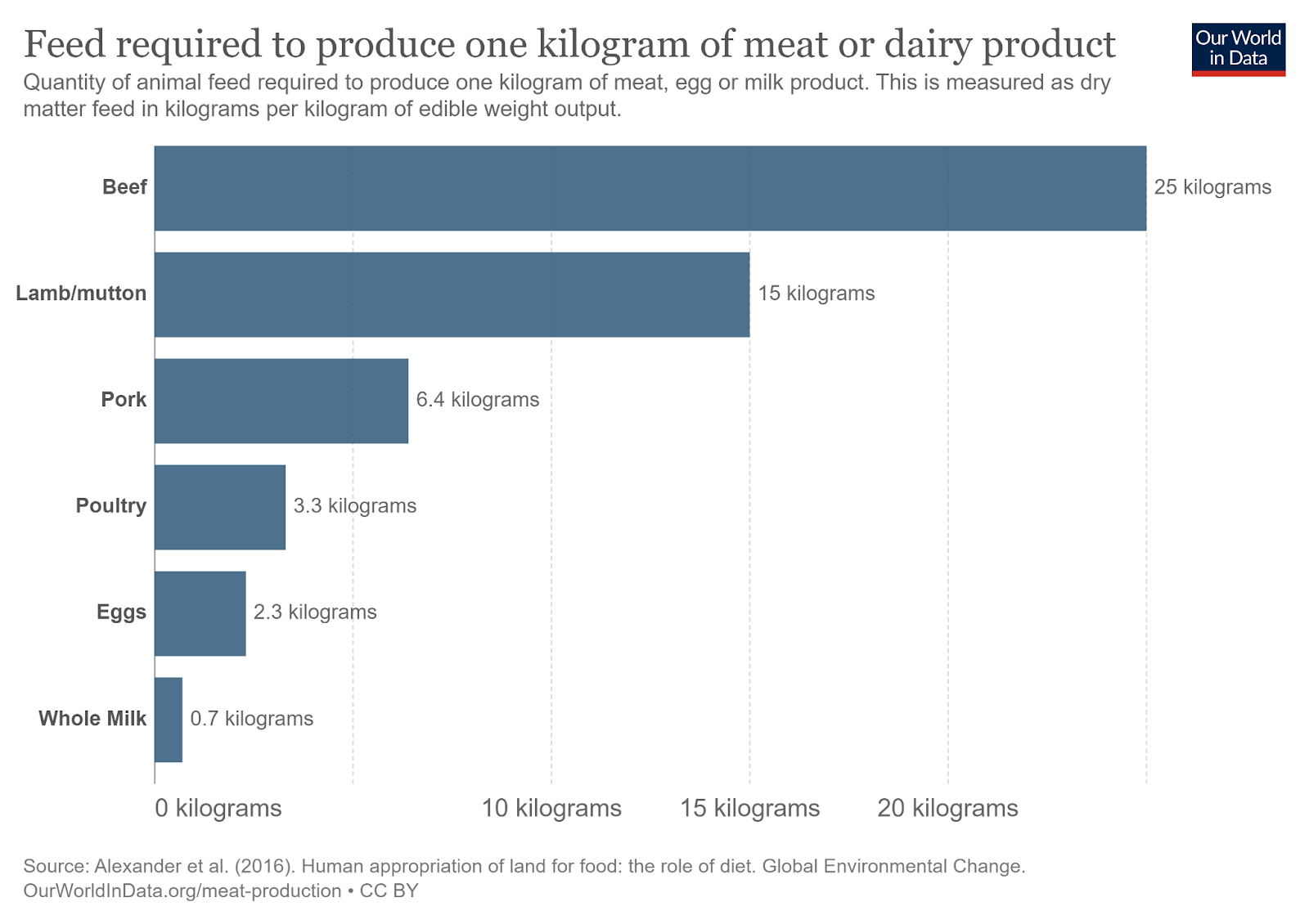
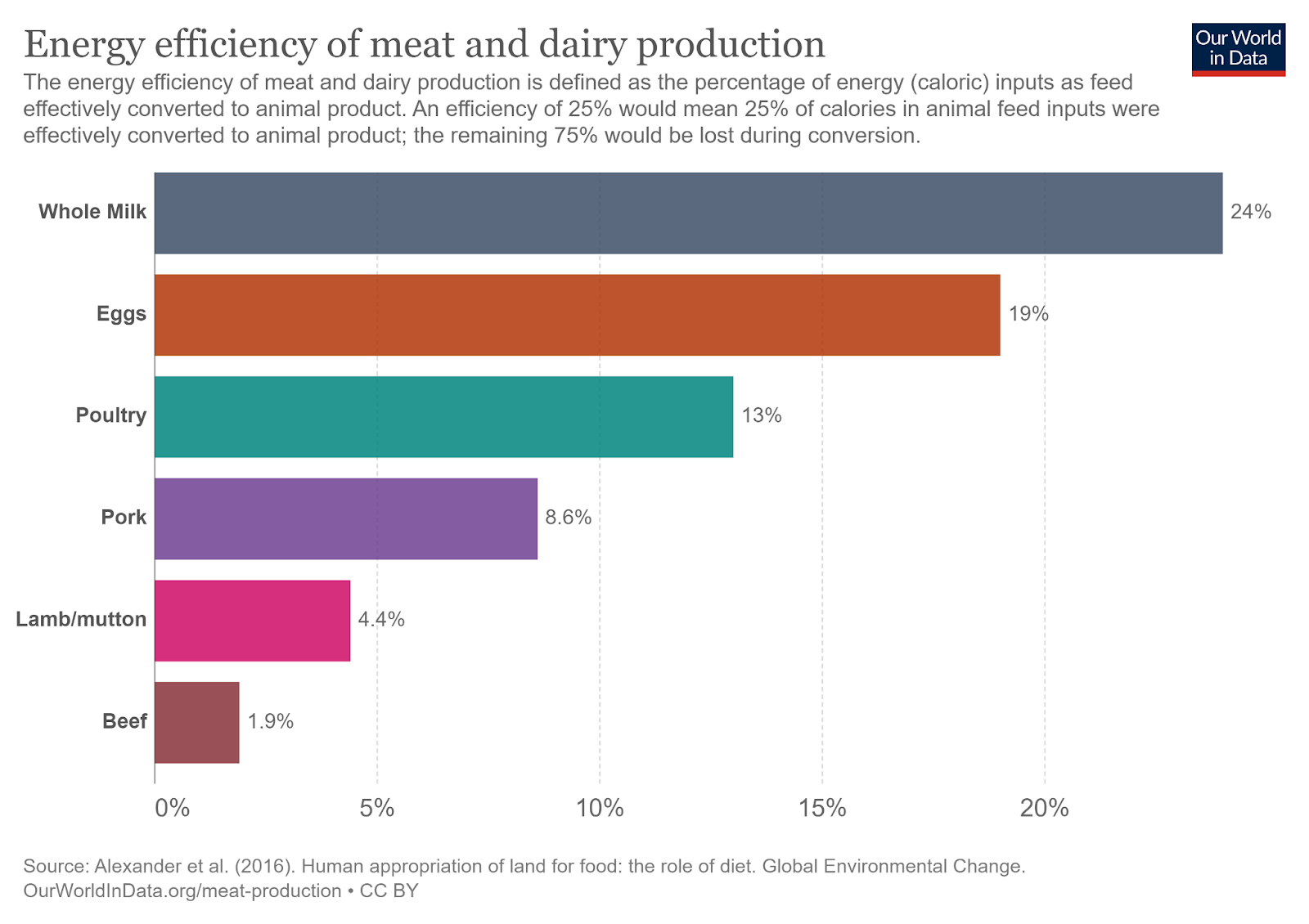
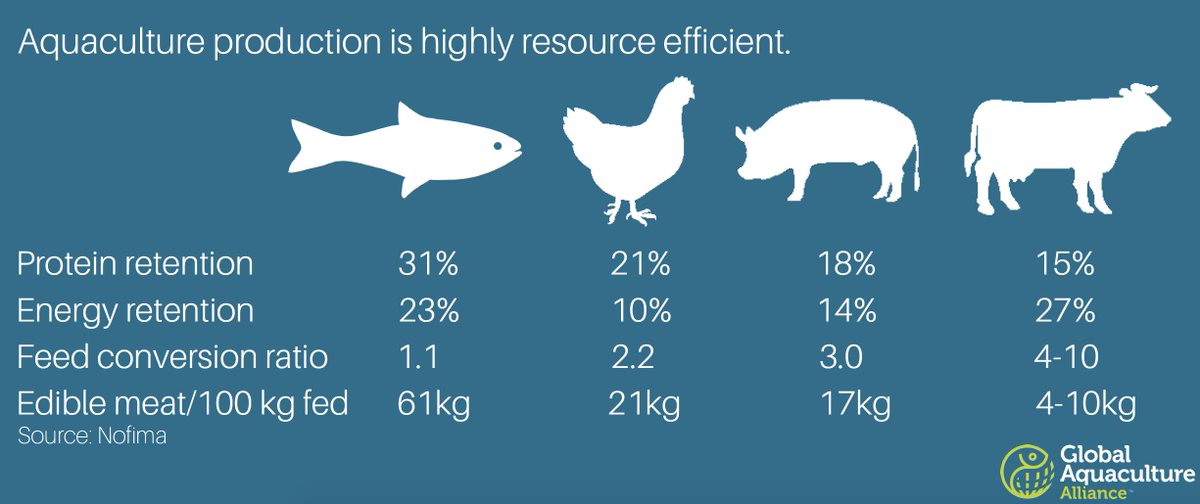
But of course, these efficiency figures are not universal. If breed, feed and farm management is not done properly, the efficiency would drop. This explains the shortcomings of the dairy industry in Asia and Africa, since most dairy production is not efficient at the moment.
But this efficiency gap can also be closed by following the methods explained above. And when those conditions are met, dairy products can be price competitive against eggs, chicken and fish as they are in Europe and America.
Even if dairy becomes price competitive, can dairy substitute poultry and fish in lactose intolerant Asia and Africa?
If high-quality, cost-competitive dairy products become widely available in Asian and African markets, it is reasonable to expect that it will have a higher share in the animal protein market and reduce the share of other animal products.
Most people have limited budgets and bellies so they do not and cannot consume indefinite amounts of food. Most people also reserve some portion of their plates for animal products and perceive dairy as a nutritional food which is similar to other animal products. Dairy products are considered a reasonable substitute for eggs (in breakfast) and for meats (in lunch and dinner). One can expect that if there is quality and cost-competitive milk, cheese and yogurt in markets, more people will buy them. These people would be likely to buy and consume less eggs for breakfast, at least not every day, since they have already spent their food budget on dairy and consumed enough animal products for their taste and nutrition. Same goes for lunch and dinner. One may reasonably buy more yogurt and cheese if they taste good and are cheap, and serve with pasta or rice for example. If one is eating yogurt or cheese at dinner, one is less likely to eat more chicken, fish, pork or beef.
One can argue that although the supply-demand structure explained above makes sense in regions where people are mostly lactose tolerant, it would not work for lactose intolerant people. This point is partly correct. If a person is lactose intolerant, it will affect their consumer choices. But there are solutions. Many lactose intolerant people do consume significant amounts of dairy if they choose. This is due to the fact that lactose intolerance does not make people taste dairy differently or make them sick, it just makes the digestion uncomfortable. Moreover, lactose intolerant people can and do manage their intolerance by consuming small amounts of dairy per serving. Finally, while fluid milk is harder to digest, processed dairy products such as cheese and yogurt are much easier to digest for everyone, including the lactose intolerant. Turkey and Greece for example, also have high levels of lactose intolerance in their populations but their dairy consumptions are high. This can be explained by the fact that both countries produce and consume large amounts of cheese and yogurt.
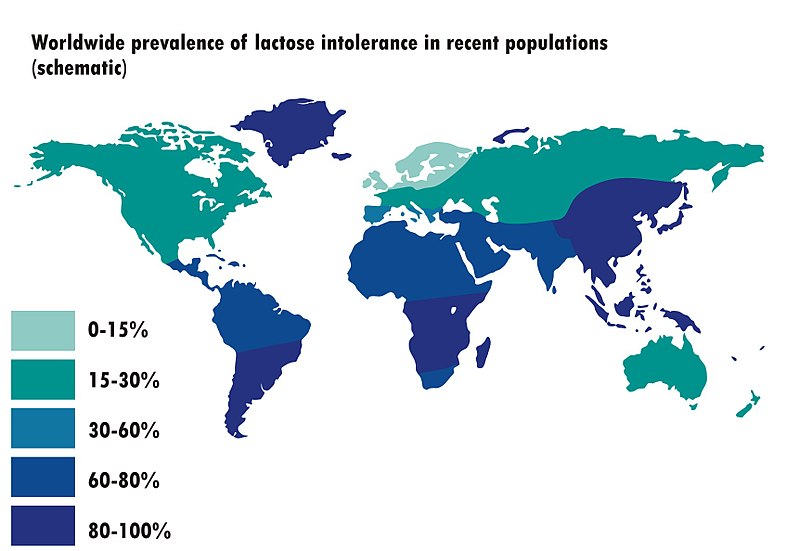
Source: Wikipedia https://en.wikipedia.org/wiki/Lactose_intolerance
Even if everything explained above is true, what can an organization do?
An international umbrella organization (like Good Food Institute) can draw more investment, arrange foreign aid, lobby governments for better infrastructure and governance, provide technical and marketing assistance to dairy companies, cooperatives, farmers, promote the consumption of more dairy products in retailers and hotel/restaurant/café chains in Asia and Africa.
Local, national dairy cooperatives and associations can do almost the same things within their region or country.
A local or foreign for-profit company can invest in a country where dairy production, processing or marketing is underdeveloped.
Since improving the efficiency and the output of the dairy industry is also in the interest of the farmers, companies, governments and consumers, this intervention is unlikely to face stiff resistance. For this reason, this intervention may be relatively much more tractable in countries where animal advocacy and alternative protein promotion is difficult due to unfavorable socioeconomic conditions. While most farm animal welfare interventions require an uphill fight (small group of advocates campaigning against million dollar corporations, innovating new plant based products and creating new supply chains, competing against established food companies, moral advocacy for animals in societies where speciesism is the norm), the main obstacles ahead of this intervention seem to be mostly logistical.
Neglectedness
Who is working on this?
Existing dairy farmers, companies, cooperatives in Asia and Africa are operating on a for-profit basis to produce dairy in these regions. There are also foreign companies who provide technical assistance to local dairy farmers. However, as explained above, dairy production is still underdeveloped, both in absolute and relative terms.
There are also many development agencies who support developing countries to increase their dairy production by providing grants, loans and technical assistance. World Bank, United Nations Food Organization Agency, United Kingdom Department of International Development, New Zealand Foreign Affairs Ministry, Japan International Cooperation Agency are some examples. These institutions perceive the development of dairy as a means of poverty reduction and nutrition improvement. However, these institutions see the development of dairy as “one of many” poverty reduction projects.
Current trajectory of dairy in Asia and Africa
If the current underdeveloped state of dairy in Asia and Africa persists, this will lead to low levels of dairy consumption and high levels of chicken and fish consumption in these regions. This trajectory is likely to continue since the current state of dairy is inefficient and is not competitive with other animal proteins. Even if the situation of the dairy sector in Asia and Africa improves due to natural economic growth, it can be slower than the growth of poultry and fish farming sectors. Low dairy and high chicken and fish consumption can also become somewhat permanent if price-competitive and abundant chicken and fish achieve market dominance and dairy-excluding, chicken-fish dominant cuisine cultures become established.
Which countries can be prioritized?
One can prioritize countries which have larger populations, higher income, and lower dairy consumption. Most countries mentioned below have low dairy consumption but three are exceptions: India, Pakistan and Kenya. These countries have high relative dairy consumption but their dairy consumption per capita in absolute amounts is still not very high compared to other regions. India, Pakistan and Kenya also consume mostly milk, not processed dairy products such as cheese and yogurt. So these countries can further increase the production and processing which can result in higher absolute and relative dairy consumption. Finally, dairy “gains” in these countries are not driven entirely by efficiency gains. So in order for dairy to remain competitive against other animal products (eggs, chicken, fish), efficiency improvements may also be necessary. So doubling down on the existing progress may be reasonable.
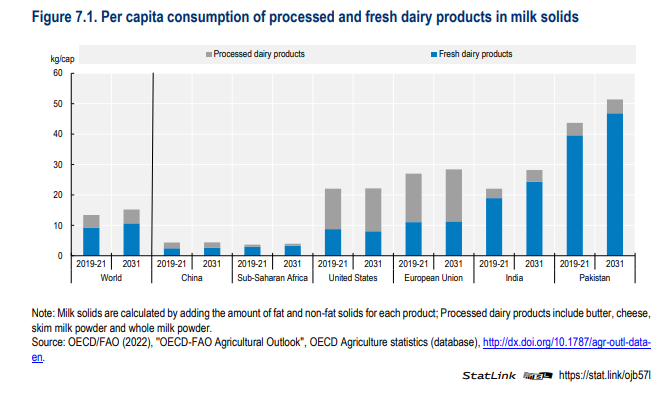
Here are some countries which seem reasonable to prioritize:
Country | Current Population | Future Population 2100 projection | Real GDP per Capita, 2019 | Dairy Consumption per Capita (absolute-relative) |
China | 1.42 billion | 1.06 billion | 14,128$ | 2.7 g - %7.1 |
India | 1.41 billion | 1.45 billion | 6.711$ | 10.2 g - %70.3 |
Nigeria | 216.8 million | 732.9 million | 4.984$ | 0.7 g - %9.9 |
Indonesia | 279.1 million | 320.8 million | 11.595$ | 1.5 g - %7.0 |
Egypt | 106.2 million | 224.7 million | 12.060$ | 4.0 g - %18.9 |
Tanzania | 63.3 million | 285.7 million | 2.359$ | 3.4 g - %36.9 |
Philippines | 112.5 million | 146.3 million | 8.449$ | 2.0 g - %8.6 |
Bangladesh | 167.9 million | 151.4 million | 4.658$ | 2.2 g - %19.2 |
Angola | 35.0 million | 188.3 million | 7.160$ | 1.2 g - %8.0 |
Pakistan | 229.5 million | 403.5 million | 5.026$ | 19.5 g - %72.2 |
Malaysia | 33.2 million | 40.1 million | 25.735$ | 2.4 g - %5.7 |
Thailand | 70.0 million | 46.0 million | 17.116$ | 2.5 g - %9.8 |
Vietnam | 99.0 million | 97.4 million | 7.507$ | 2.0 g - %-5.8 |
Iraq | 42.2 million | 107.7 million | 11.920$ | 2.7 g - %20.4 |
Ethiopia | 120.8 million | 294.4 million | 2.721$ | 2.9 g - %53.7 |
Kenya | 56.2 million | 125.4 million | 4.237$ | 6.6 g - %45.8 |
South Africa | 69.8 million | 79.2 million | 12.536$ | 4.9 g -%15.5 |
Iran | 86.0 million | 98.6 million | 13.241$ | 4.9 g - %20.7 |
What can a funder do?
Open Philanthropy can initiate the foundation of an international umbrella organization like Good Food Institute (Good Dairy Institute?) which can draw more investment, arrange foreign aid, lobby governments for better infrastructure and governance, provide technical and marketing assistance, promote consumption of more dairy products in retailers and hotel/restaurant/café chains in Asia and Africa.
Open Philanthropy can also fund local, national dairy cooperatives which can do almost the same things in their region.
Open Philanthropy can also invest and provide seed capital for promising dairy companies (as it did in the alternative protein sector by investing in Impossible Foods) in countries where the dairy sector is particularly underdeveloped and where impact opportunities are significant such as Nigeria.
By these interventions, Open Philanthropy can change the trajectory of dairy in Asia and Africa and increase the share of dairy in these regions (for example by +%10-%15). This can shift the markets in a way that would limit the growth of poultry and fish farming and thus mitigate total farm animal suffering.
Cost-effectiveness analysis
This cause area cannot be cost-effective if the funder bears the overall costs (cows, feeds, farms etc.) itself. As other cost-effective farm animal welfare interventions, one has to fund a small number of people in order to convince other people to bear the overall costs. For example, most of the costs of animal welfare reforms or alternative protein development are paid by companies, investors, governments and consumers. Funder only pays for the salaries and operation costs of a small team to create a change in the food system.
In order to achieve cost-effectiveness in this potential cause area, one has to do the same. Unfortunately, I cannot calculate a “number of animals affected per dollar spent” figure in this case, since there are many variables and this has never been tried before. But I will try to make an analysis by comparing the potential cost-effectiveness of this potential cause area with other supply-side farm animal welfare intervention: alternative protein development and promotion. I will assume that current grants to Good Food Institute are cost-effective, and make further reasoned assumptions which justify the possible cost-effectiveness of this potential cause area.
Assumption #1: An international umbrella organization like Good Food Institute which will work to develop and promote dairy in Asia and Africa can be founded, and assemble a team which is as competent as Good Food Institute leadership and staff, if it is proportionally funded.
I will call this fictional institution, “Good Dairy Institute”.
Assumption #2: Good Dairy Institute can draw similar or even higher amounts of capital to Asian and African dairy sector as the Good Food Institute draws capital to the alternative protein sector.
There are uncertainties about the scope of plant-based protein adoption which is seen by the latest drop in sales in the US. Dairy in Asia and Africa on the other hand, can be seen as a much safer bet for investors than alternative proteins. Although this may turn off more risk hungry and aggressive investors, more conservative and ordinary investors can be convinced to consider investing in dairy in Asia and Africa.
Furthermore, one can also cooperate with governments to arrange foreign aid and development grants from international institutions like the World Bank, United Nations, and western governments.
Assumption #3: Dairy companies and farmers can produce similar or even higher amounts of output using similar resources as plant based protein companies produce alternatives.
Dairy has a high feed conversion ratio and needs much less technological infrastructure. Labor costs are also lower in developing countries. Plant based protein companies on the other hand, have to build high-tech factories and pay high skill labor. Plant based protein companies also use more expensive raw materials such as beans, peas, almonds and rice. Dairy farms usually use soy, corn, wheat or grass, and straw as feed. These are much cheaper.
Also, since the current state of dairy in Asia and Africa is underdeveloped, efficiency improvements would likely be very impactful and tractable (such as breed, feed and farm management improvements). Plant based protein companies on the other hand, have to innovate new technology to improve taste and output per cost.
These dynamics suggest that the dairy sector can produce similar or more products with the same amount of additional funding than the plant-based protein sector can produce alternative protein products.
One can claim that plant-based protein is more efficient since one does not need to feed the cow first to feed the humans later. But due to the efficiency of high yielding breeds and lower feed costs, animal based protein products are still less costly to produce. This can be seen by the prices: plant-based protein products have not reached price parity with animal products yet.
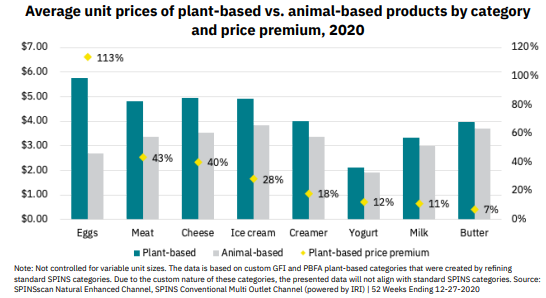
Source:Good Food Institute 2021 US retail market insights plant-based foods report
(I am somewhat uncertain about this point. Another Good Food Institute report suggests that plant-based products can be produced at relatively low prices, even cheaper than a large investment in dairy. But if that was the case, the unit prices should also have been cheaper. Perhaps it is expected that plant-based protein production at scale would significantly reduce costs.)
Assumption #4: Dairy can substitute similar or even higher amounts of eggs, chicken and fish than plant-based alternatives.
People perceive dairy as an animal product which has similar nutritional value as other animal protein products. Dairy is also perceived as a “natural” food. Dairy can also achieve price parity with chicken and fish if necessary efficiency improvements are implemented. Since one of the main reasons people consume so much eggs, chicken and fish is their low price (many meat eaters would prefer steak), dairy can substitute significant amounts of those goods if it is widely available, price-competitive, and high-quality.
Plant-based protein products, on the other hand, have significant limitations. Firstly, a lot of people do not perceive plant-based products as nutritional or tasty as animal products. Alternative protein products also seem “unnatural” to many consumers. Alternative protein products are also currently more expensive than animal products. This is especially true for eggs, chicken and fish, the animal products which create the majority of animal suffering.
Most plant-based protein products also aim to look and taste like dairy and beef which suggest that their primary substitution effect will occur in these categories. Plant-based food consumers also report more environmental concerns than animal welfare concerns which again suggest that the main substitution effect will occur for dairy and beef. Also, a significant number of plant-based protein consumers do not eat animal products in the first place, which makes alternative plant-based protein products a substitution for other plant-based foods. Finally, many meat eaters who buy alternative plant-based products, continue to buy similar amounts of animal products (article), which suggest that consumers do not perceive plant based foods as a substitute for animal products and do not significantly change their total animal consumption.
In conclusion, dairy development and promotion is Asia and Africa can be more cost-effective and tractable than plant-based alternative protein development and promotion in terms of substituting chicken and fish animal products.
Assumption #5: Side effects of dairy development and promotion in Asia and Africa are not smaller than the indirect effects of plant based protein development and promotion.
One can claim that this potential cause area is not cost-effective, not because of the insignificance of its direct effects but its weak long-term and/or indirect effects since it does not involve a moral advocacy. On the other hand, most people believe that alternative protein development and promotion is not only instrumental for its substituting effects, but also instrumental to create a moral shift in the society. It has been claimed that “people eat meat despite how it is produced, not because of how it is produced”. I think this claim implies that if people are presented with similar food choices, they have the moral fiber or preference to choose the plant-based option: plant-based alternatives not only directly substitute existing animal products, they also invite consumers to consider and change their moral attitudes towards animals. Animal advocates’ one wish is that when they take their friends to dinner and make them try plant-based burgers, they would agree to go vegan.
Although I wish this was the case, I am somewhat pessimistic about the prospects of a moral shift towards animals, even in developed countries, even with the rise of plant-based alternatives. Ordinary persons’ (including the very educated persons’) level of concern and respect towards animals is unfortunately very low and does not seem to change much (at least on behavioral level) after years of advocacy (Singer’s Animal Liberation was published 47 years ago). If the main obstacle towards animal liberation was the absolute unavailability of reasonable alternatives to animal products, this problem has already been solved by now. If a moral shift had been in the waiting, we should have seen some results by now after Burger King started to serve Impossible Burgers, without necessarily waiting for the exact price parity.
For these reasons, I think one should primarily judge the cost-effectiveness of a cause area by its direct and/or institutional effects such as substitution impacts and welfare increases. Creating significant moral attitude changes (through direct advocacy or indirect alternative approaches) do not seem very tractable for the moment.
Finally, as I explained above in the “important side-effects” section, increasing the share of dairy has also tangible side effects as well which should not be ignored.
Assumption #6: Potential additional cow suffering caused by this intervention, plus the substitution effects of plant-based food for cows and cattle do not change the overall case explained above.
While I think this is obvious, it is much harder to compare since it involves many variables. As explained above, cow suffering per dairy product is a fraction of chicken/fish suffering per egg and meat. If the previous assumptions hold and supports at least some higher impact in favor of dairy, then cow and cattle numbers have to be extremely high (due to fewer numbers of animals used in dairy) in order to change the equation below, which seems very unlikely:
CFS(GDI) + SE(GDI) – CowS(GDI) > CFS(GFI) + SE(GFI) + CowS(GFI)
CFS(GDI): Decrease in chicken and fish suffering due to the substitution effect of Good Dairy Institute
SE(GDI): Side effects of Good Dairy Institute
CowS(GDI): Increase in cow suffering due to Good Dairy Institute
CFS(GFI): Decrease in chicken and fish suffering due to the substitution effect of Good Food Institute
SE(GFI): Side effects of Good Food Institute
CowS(GFI): Decrease in cow and cattle suffering due to the substitution effect of Good Food Institute
I have to underline that I do not mean to criticize or discredit alternative protein cause area. As I said, I believe alternative protein cause area and grants to support this cause area are cost-effective. My main aim was to show that dairy intervention can bypass the limitations of plant based alternatives, not to argue that plant based alternatives are not effective. In fact, I think the weakest assumption above is the first one. I do not think it is very likely that this “Good Dairy Institute” can create a team which is as competent and effective as Good Food Institute leadership and staff.
Finally, since I am not an economist, or a researcher with quantitative skills, I do not have many “numbers” in my analysis. Further research is needed to verify the theoretical arguments explained above.
But I have found some papers “with numbers”. For example this article claims that: “The simulation results show that technology improvement in Asian countries would dampen world dairy prices and meanwhile boost domestic dairy consumption.”. This article also defends the view that it is the supply of animal products which drives the demand.
I have read other articles but it is hard to generalize empirical data, since there are various differences between urban and rural, different countries and types of production of different animal products. Since I do not have a deep understanding of empirical data, I have some uncertainty about the power of the substitution effect of higher dairy supply. Also, one should also be careful about the accuracy of the statistics on animal numbers.
But if all assumptions above hold, then this cause area has the potential to be highly cost-effective.
Possible concerns and replies
Isn’t it immoral to substitute chicken and fish suffering with cow suffering?
It is not definite that this intervention will in fact create more cow suffering. As explained above, most efficiency interventions do not harm cow welfare, on the contrary increase it. The use of high yielding breeds can also result in a smaller number of total dairy animals.
But even if one concedes that this intervention will create more suffering on at least some individual cows, one has to see that every action and intervention creates some side effects and one can only solve these dilemmas by a utility calculus most of the time. For example, if one adopts a vegan diet or promotes alternative proteins, some mice in a new legume farm may also be killed at the end of the day due to industrial agriculture. It could have survived if additional demand for that plant-based food was not present. Of course, one can respond by saying that a vegan diet or a plant protein source would decrease the total animal deaths and suffering by removing more animals from the supply chain. That is correct. And the same logic applies here as well. If closing the dairy gap in those regions creates some suffering for some animals but mitigates the total animal suffering, then it can also be deemed moral.
Animal welfare reforms also work similarly. Thanks to new broiler welfare standards new breeds are now used in the chicken meat industry. By these policies, animal advocates aim to substitute fast growing breeds (for example Cobb-500, Ross-308) with slower growing breeds (for example Hubbard JA757 or Norfolk Black). These are different animals. By implementing welfare reforms, we do not improve the welfare of existing animals who suffer, we substitute animals who will suffer more with ones who will suffer less in the future. But these interventions eventually result in Hubbard JA757 (high welfare breeds) suffering and death. We deem that moral because we can’t save all of them and without the intervention there would be more Cobb-500 suffering and death, and more total animal suffering. If one agrees that substituting the suffering of one breed of an animal (Cobb-500 broiler chicken) with the suffering of another breed of an animal (Hubbard JA757 broiler chicken) is acceptable if it decreases total suffering, then substituting the suffering of one specie (chicken or fish) with the suffering of another specie (cow) should also be acceptable if it decreases total suffering.
Isn’t this some kind of western imposition on developing nations?
Most developing countries mentioned above are already importing lots of dairy products and thus dependent on other nations for dairy. Exporter countries on the other hand are mostly developed western nations. It is therefore reasonable to expect that the countries mentioned above would welcome more self-sufficiency and food independence.
Furthermore, if one assumes that trying to change existing diets of nations constitute an imposition, then other forms of advocacy such as vegan outreach or alternative protein promotion may also fall in this category. If this would be an uncharitable interpretation, it would also be an uncharitable interpretation to claim that supporting and cooperating with developing countries to have a larger share of dairy consumption in their diets constitute an imposition.
Doesn't this contribute to climate change?
The effect of dairy on climate does not depend on how much people consume dairy, it depends on the number of dairy animals and their feed. So even if the amount of dairy increases, greenhouse emissions due to dairy may remain the same or even decrease if one can increase the efficiency of dairy animals. Developed countries which consume more dairy than other countries, have smaller numbers of animals but produce more milk because milk yield per animal is significantly higher as explained above.
Finally, even if this intervention does create more emissions by increasing the number of total dairy animals, this intervention can still be reasonable if the suffering mitigated is greater than the suffering created by additional emissions. Considering the level of suffering of chickens and fish in factory farms, this seems plausible. Also, one can also limit greenhouse emissions and mitigate climate change by many means while there seems to be very little ways by which we can mitigate the suffering of factory farmed chicken and fish on a large scale.
Even if all of this is fine, isn’t this too controversial?
Effective Altruism community and Open Philanthropy have made many controversial moves in the past: such as deprioritizing climate change, vegan outreach, and prioritizing cause areas like animal welfare reforms (which was and still is controversial in animal advocacy circles), cultured meats, shrimp welfare, editing the genes of mosquitos, artificial intelligence, existential risks, etc. I think helping low to middle income countries to develop their dairy sector (a multipurpose cause area which reduces poverty and animal suffering) would be much less controversial.
Conclusion
If the points explained above are true, then one can imagine two possible futures. First one is the current trajectory in which most populous countries in the world will have low dairy consumption and high chicken and fish consumption. Second one is the alternative future where because of the interventions in this potential cause area, most populous countries in the world will have relatively higher dairy consumption and lower chicken and fish consumption. In this alternative future, this change will probably not appear on the news, and perhaps even animal advocates will not celebrate a %15 increase in dairy consumption in a distant country. But from “the point of view of the universe”, it can have a large impact on the suffering of many sentient beings.
